Meet the people shaping the future of our planet
Each year, the Grist 50 identifies emerging leaders in climate, equity, and sustainability, as nominated by you, our readers. These brilliant souls are politicians, artists, butchers, and scientists. They’re inventing new substitutes for plastic, defending their communities from environmental hazards, writing better public policies, and creating ways to reduce food waste. And they’re just getting started.
The 50 visionaries on this year’s list are regular people who also happen to be sustainability stars. They hail from all walks of life and every part of the country. Simply put, these are ordinary people who are achieving extraordinary things. Around here we call them Fixers, because they’re not afraid to face problems head-on and work toward just solutions.
Each of their stories is a tiny tale of inspiration, revealing why they vowed to make a difference and how they made it happen. Through grit and determination, these everyday climate champions are demonstrating that a better, cleaner, more just future is still possible.
Xavier Cortada

During a trip to Antarctica with the National Science Foundation’s Antarctic Artists and Writers Program in the early 2000s, Miami artist Xavier Cortada had a realization: “I’m literally standing on the ice sheets that could melt and drown my city.” That inspired a body of work dedicated to making sea-level rise tangible to other people. Cortada started with a series of about 100 paintings created with sediment and melted ice from the West Antarctic Ice Sheet and Antarctic sea. Those art pieces provided the backdrop for yard signs he made for a 2018 project called Underwater HOA. Each sign features a number from zero to 17, which represents how many feet of sea-level rise it would take to submerge a house based on its elevation.
The project includes an ongoing education and engagement component as well. Members of the Underwater HOA, a group of homeowners from the suburb of Pinecrest, Florida, meet monthly to hear from experts — including some of Cortada’s colleagues at the University of Miami — and plan together for a climate-changed future. This year, Cortada is taking the work further with The Underwater, a project that will engage high school students, residents, and elected officials, and ultimately convene an “underwater summit” to plot out equitable ways to address Miami’s vulnerability to rising seas. “My hope is that these politicians aren’t going to be shamed into acting, but they’re going to be compelled by all this community support to want to be involved,” he says.
“I want to motivate you, to entice you, to make you curious enough so that you act.”
These projects are just the tip of the iceberg of Cortada’s work, which has also included interactive installments around mangrove reforestation, native wildflowers, and honoring Miamians lost to the COVID-19 pandemic. For him, art isn’t just about getting people to look at something. “It’s a very activist, engaged practice, where I want you to do something,” he says. “I want to motivate you, to entice you, to make you curious enough so that you act.”
Kristy Drutman

Like many activists, Kristy Drutman’s passion for human rights, climate change, and environmental activism flourished in college. But she also felt a disconnect — few activists and scholars looked like her, and the environmental movement she saw did not reflect the diversity of the U.S. She talked to climate scientists who noticed the same problem from another side: Few people, beyond the confines of academia and mainstream green organizations, were engaging with the research. Drutman saw how the lack of diversity and inclusion undercut the creative storytelling that would connect with a bigger audience.
While still in school, she launched Brown Girl Green as a podcast, then increased its presence with a blog, social media, and video. The project, now four years old, sits at “the intersection of inclusive intersectional environmental storytelling, science communication, and creative dialogue,” a lot of it derived from her interviews with diverse experts. Her aim is finding accessible ways to explain complex issues in a warm and friendly style. “I can talk about these things in a way that makes them less scary,” she says. “I wanted to put a face to the conversation — and I was willing to make that my face.”
“I get messages all the time from people who say mine is the first page or content that spoke to them, where they felt they were talking to a friend.”
Brown Girl Green now has tens of thousands of followers and particularly resonates with young people of color. “I get messages all the time from people who say mine is the first page or content that spoke to them, where they felt they were talking to a friend.” With that in mind, she launched a green jobs board to link that audience to the environmental careers they seek. She hopes to add live chats, résumé coaching, and other services. Also on the horizon: a new multiplatform series on love and climate change.
Allison Janae Hamilton

Visual artist Allison Janae Hamilton has deep roots in the landscapes of the rural South. Her mother’s family farms in western Tennessee, and Hamilton grew up in swampy Florida. Those roots emerge in startling and unexpected ways in her photography and installations, which use animal hair, feathers, tree trunks, and other materials to evoke that wildness. For her, though, the natural world is never just nature — it’s also metaphor, culture, myth, and history. “In my overall exploration, I bring in issues of environmental justice and also think about how landscape has been used culturally, as respite, as a healing modality — as many things at once.”
For her, the natural world is never just nature — it’s also metaphor, culture, myth, and history.
Climate change and environmental justice are woven through her work as feelings and suggestions rather than as explicit mentions. Around the time Hurricane Maria hit Puerto Rico in 2017, for instance, she was invited to contribute to a climate change-themed exhibition at New York’s outdoor Storm King Art Center. She came across the hymn “Florida Storm” commemorating the Great Miami Hurricane of 1926 and got to thinking about how hurricanes are acts of nature that become social disasters. Her 2018 outdoor sculpture, “The peo-ple cried mer-cy in the storm,” is named for lyrics in that old song. “It’s to memorialize those who perished and pay homage to these cultural forms that allow for coping with these horrific events.”
Her film installation, “A House Called Florida,” is set to premiere this spring at the Mississippi Museum of Art. In it, a family is slowly pushed out of their home, part of her ongoing meditation on climate migration and environmental justice, and her method of juxtaposing place, cultural resonances, and climate: “I bring all of these elements together, and the viewers interpret them in a variety of ways.”
Jamie Henn
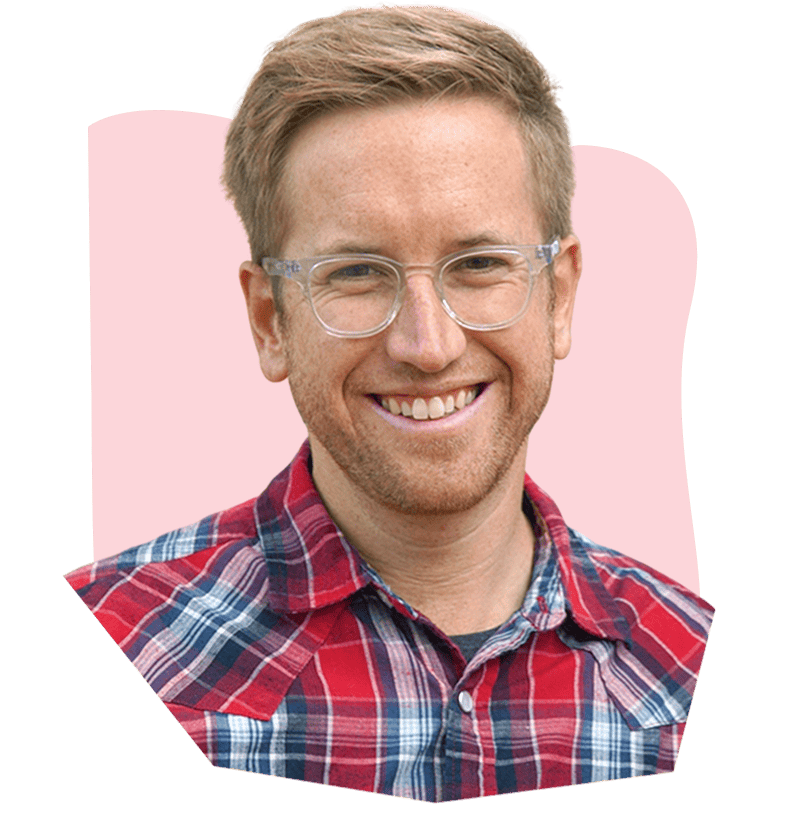
Confronting the reality of climate change means changing the stories we tell, says Jamie Henn. Stories shape our understanding of what is possible, and how change happens. “That’s the experiment of my career,” he says.
Right out of college, Henn and some friends founded the advocacy organization 350.org to recast that narrative. They launched a national day of action in 2007, with events in all 50 states, then a global day of action in 2009 with participants in 181 countries.
His original insight: To change what’s possible, first change the narrative.
Despite these successes, Henn saw that mass mobilization wasn’t enough, because the political power of the fossil fuel industry blocks change. In 2019, he launched Fossil Free Media, a “nonprofit communications lab” that returns to his original insight: To change what’s possible, first change the narrative. The org helps grassroots community organizations tell the stories of real people directly affected by the industry. Oil and gas companies “want the public to think they have it covered, and that we don’t have to transition from fossil fuels,” he says. “That’s the story we’re trying to pierce.”
Henn is also now working to publicize who profits from fossil fuels and the related burdens we all bear, just as Purdue Pharma exposés revealed the profiteering behind opioid addiction. His team also pressures media and PR professionals to reject working with Big Oil. Henn says more than 250 agencies have signed the “clean creatives” pledge, and some big firms are listening. “It’s not enough to tell our story better, if we’re not disrupting the massive amounts of propaganda the industry puts out,” he says.
Nina Misuraca Ignaczak

A lifelong resident of the Detroit area, Nina Misuraca Ignaczak spent over a decade in urban planning before becoming a journalist in 2013. In both careers, she saw an environmental narrative that revolved around natural resources, trails, and other amenities. There wasn’t enough attention being paid to public health, equity, and the effects of environmental hazards in a highly segregated city like Detroit. “I really just wanted to see a news organization focus on those issues and tell those stories from the perspective of the people who live here,” she says. So she started one.
Planet Detroit launched in 2019 as a newsletter that Ignaczak wrote in her spare time, aggregating local environmental justice news. It’s since grown into a digital publication that garnered 45,000 new readers in 2021. Ignaczak has hired two part-time contributors and a growing roster of freelance reporters. The team covers issues ranging from clean transportation and outdoor equity to the disproportionate impacts of flooding, lead poisoning, and asthma on Detroit’s BIPOC communities.
She wanted to focus on health and equity — and tell those stories from the perspective of the people who live there.
Last year, the website began publishing user guides to help readers understand how climate change affects things like their water and energy utilities. The goal is to provide a comprehensive resource, Ignaczak says, “for people who not only don’t understand their water bill, but don’t understand how their water utility is governed and how it’s funded and what they can do to get involved.”
That’s the strength Ignaczak sees in local journalism — empowering residents with the knowledge they need to advocate for themselves. She believes every city should have a version of Planet Detroit. “I’m not interested in franchising anything,” she jokes, “but I would love to see this idea copied in other places.”
Pita Juarez

“I’ve known since I was a little kid that I wanted to be a storyteller,” says Pita Juarez. That lifelong passion led her to study communications and journalism at Arizona State University, but she found covering the communities she belonged to in short, impartial segments didn’t feel authentic. She loved film and wanted to use it as a tool to move people by telling stories in her own way. “I decided then that I wanted to work in advocacy communications,” she says, “highlighting the brown and Black people who were leading the way.”
Today, Juarez works on independent films and targeted campaigns for Chispa, a program of the League of Conservation Voters focused on building grassroots power among Latino communities in the fight for climate justice. As the head of communications, Juarez directs a range of projects, like a recent ad campaign showing the many ways people participate in environmental justice each day, from composting to protesting to teaching their kids about science.
“Film is such a powerful tool, because we can really listen to people. I don’t think we’re doing enough of that today.”
“I think for people like me and like my community, we start getting involved in these movements because it’s personal,” she says. “I wanted to connect all of our issues as low-income, working-class people of color — that it was all connected to climate.”
One of her most recent projects is a short film examining her ancestral roots in Guatemala, how her family has experienced climate changes over the years, and the connection to land and water that her Indigenous ancestors held. Her grandmother is a main character, played by a young actor in a fictional narrative woven through the documentary.
“I see film as such a powerful tool, because we can really listen to people,” she says. “And I don’t think that we’re doing enough of that today.”
Maya Lilly

At Juilliard, Maya Lilly lived the dream of every theater kid, studying writing and acting while mastering the art of storytelling. She also became an environmental activist and president of the school’s green group. And it became painfully obvious to her that one major story — climate change — was not getting airtime.
So, in 2003, she went West, plotting to hack Hollywood’s storytelling machinery to bring climate narratives to mainstream viewers. The magical movie megaphone not only shapes the dreams and opinions of billions worldwide, but can move people to act. There was just one little problem: “In the early 2000s, Hollywood could’ve given a rat’s ass,” she says, laughing. At the same time, the climate movement wasn’t good at packaging its message. She was stuck in between. “My trajectory in L.A. was: How do I gain the storytelling skills so that when Hollywood is ready, I can tell these stories?”
“My trajectory in L.A. was: How do I gain the storytelling skills so that when Hollywood is ready, I can tell these stories?”
For years, she produced documentaries and short films focused on social and political activists. She worked alongside Lauren Greenfield, director of the 2018 documentary Generation Wealth. In 2019, she got her chance with climate, joining The YEARS Project as lead producer for digital initiatives and developing short videos that click with social media audiences. An outgrowth of the Years of Living Dangerously TV series, the project has amassed a vast following on social media — in 2020, its digital video views exceeded 1 billion.
Lilly’s goal is to help the climate movement get better at telling its own tales — which doesn’t always mean through documentaries. She is also in development for a fictional series based on The Fifth Sacred Thing, a cult classic of environmental speculative fiction. “It’s such effective storytelling,” she says. “It’s brilliant.”
Samuel Rubin
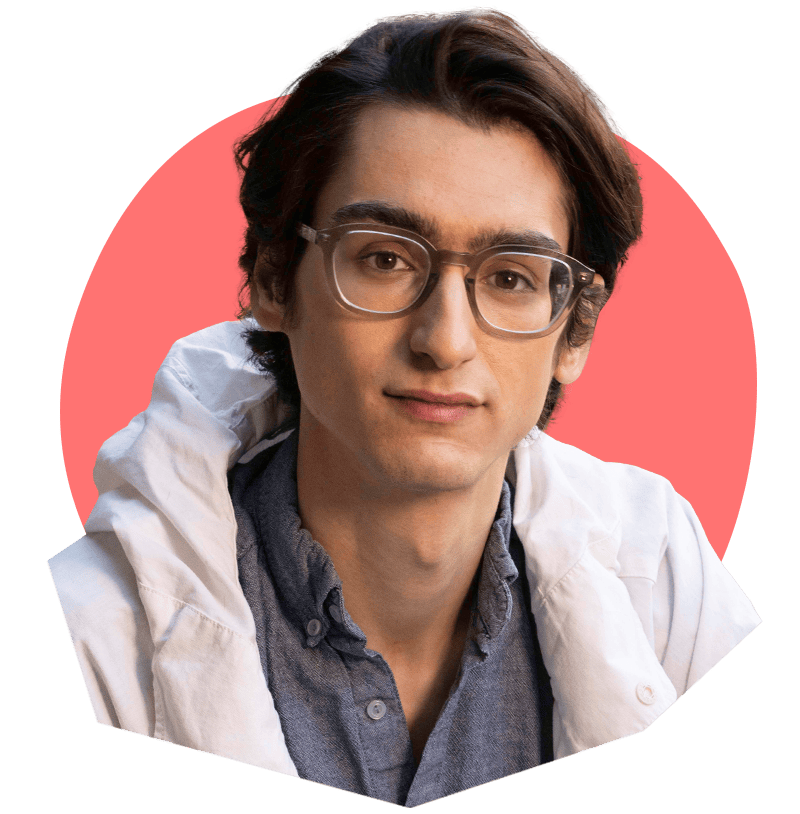
“I think everyone who is a climate activist remembers the moment they were like, ‘Oh, shit, this is so big, what’s happening,’” says Samuel Rubin. For him, that moment came when he was 15 and working on his first documentary film, about the Syrian refugee crisis. He was shocked to learn that global warming would displace many times that number of people. “I immediately got dragged into climate action from the lens of, ‘How is that going to affect humans?’” he says.
At film school in L.A., Rubin grew more interested in sustainability and started volunteering with Young Entertainment Activists (YEA!), a grassroots coalition of entry-level professionals dedicated to making social impact a part of their creative work. To raise money, Rubin helped found YEA! Impact, which does for-hire mission-aligned partnerships like running an engagement campaign for Hulu’s I Am Greta documentary.
There aren’t enough resources to support writers who want to include environmental themes — so he’s helping launch a climate-storytelling playbook.
As the org’s chief impact officer, Rubin coordinates projects like the annual Hollywood Climate Summit, slated for its third run in June. The summit convenes advocates and industry execs to build intergenerational support for sustainable media production practices and climate-centric storytelling. Often, Rubin says, there aren’t enough resources to support writers who want to include environmental themes in their scripts. That’s why this spring, he’s helping to launch a climate-storytelling playbook — 150 pages of inspiration for eco-driven plots, intersectional characters, and compelling actions.
It doesn’t mean making every film or TV show into The Lorax. Take Scandal, for example, which ran for seven seasons. “Everyone knows Scandal,” Rubin says of the Shonda Rimes juggernaut. “An episode can easily be about this climate activist that is protesting against a fossil fuel funder, and Olivia Pope represents her. And then she realizes that the fossil fuel funder is one of Grant’s donors! Ooh, what’s gonna happen?”
Rollie Williams
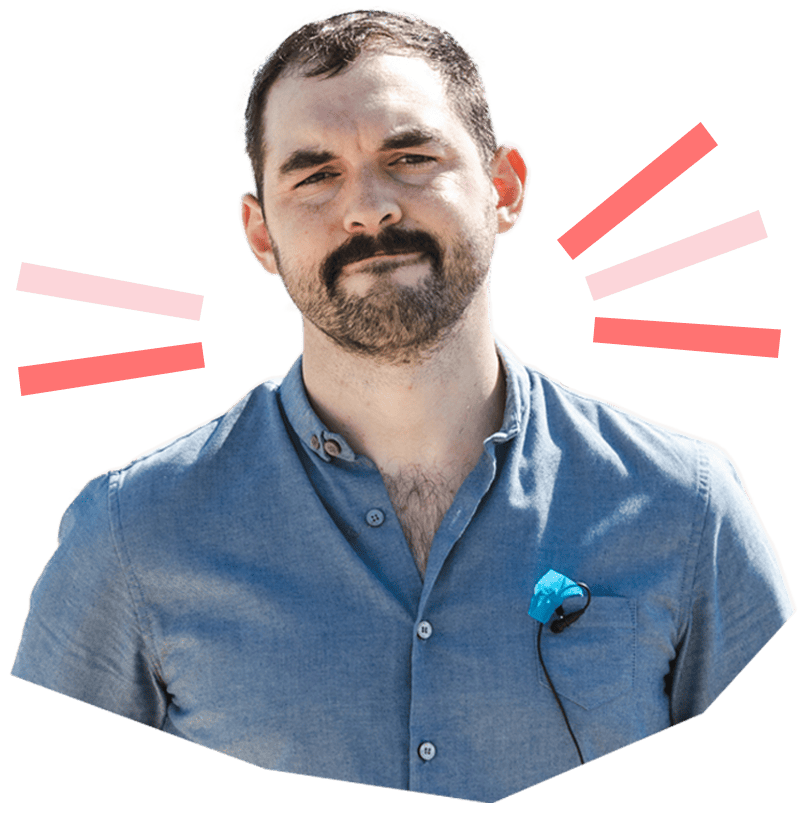
Climate change is a major bummer, but Rollie Williams thinks it’s also kind of hilarious.
Williams moved to New York City in 2013 to break into improv and sketch comedy. While flipping through books one day, he picked up a copy of An Inconvenient Truth and had a brainstorm: What if he did an impression of a burnt-out, pissed-off, totally-over-it Al Gore? “I had the idea it would be funny,” he says, demonstrating: Listen up, you dipshits, I told you this would happen.
The bit didn’t succeed right away, so Williams turned it into an interview format, carefully researching his material to ensure his jokes were scientifically accurate. He played Al Gore and invited climate scientists to chat during performances in small theaters.
Williams hopes to reach people who understand the threat of climate change, but aren’t activists — yet.
But he knew he could reach a bigger audience. In his other life as an online host for billiards shows, he’d learned to create fast-paced, smart videos that resonate online. So he launched the Climate Town channel on YouTube in mid-2020, posting snappy, clever (and educational) clips on climate. An episode on plastic recycling soon took off on Reddit, and the channel eventually grew to 269,000 subscribers. Williams recently started a membership option and can now afford to hire producers for a more polished show. “We’re making the videos more thoughtful, more pointed,” he says. “We’re adding more calls to action. And we’re developing a pitch for an HBO-style show.”
Williams hopes to reach people who understand the threat of climate change but aren’t activists — yet. “There is a giant chunk of people who are generally thoughtful but aren’t in the movement,” he says. “I want them to start engaging just a little bit.”
Kiliii Yüyan
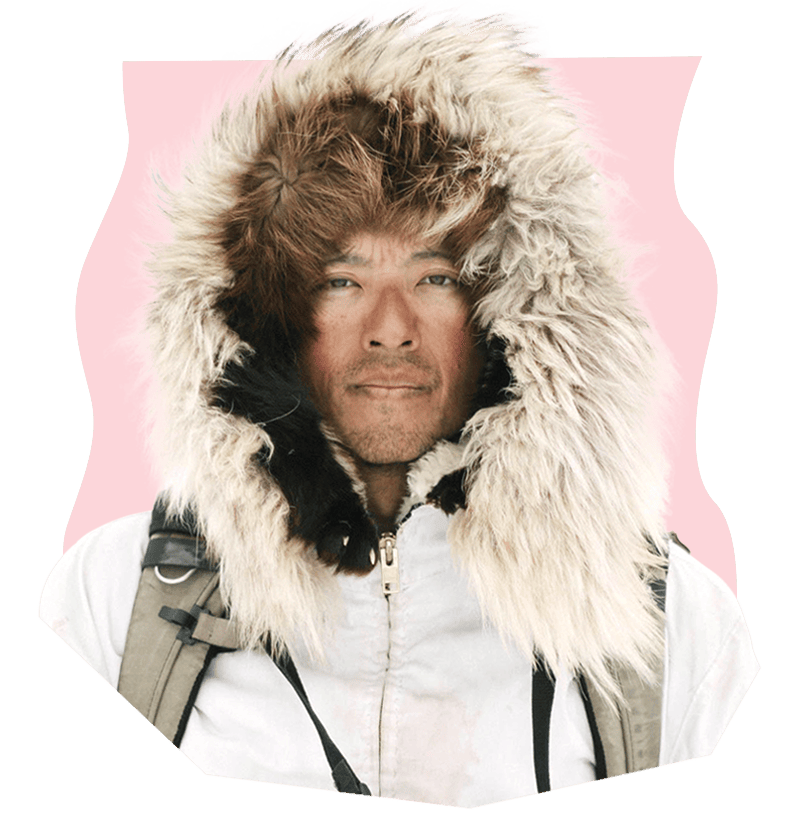
When Kiliii Yüyan’s grandmother told him the traditional hero tales from their people, the Indigenous Nanai who live along the border of Siberia and China, it kindled something within him. That passion built as he grew older, fueling his interest in Greek and Norse mythology and his love of being outside. “All of those stories harken back to the relationship of our story of coming from the land,” he says.
He grew fascinated with all kinds of Indigenous lifeways. When he was about 19, he began learning traditional skills, such as making clothing, hunting and gathering, and learning to start a fire — the techniques that are “the gateway to be able to spend time on the land, to read it, to hear the orchestra out there,” he says. Above all, he was learning the names, lives, and natures of the plants and animals around him, what he considers a form of basic literacy. He lived off the land off and on for a decade, mostly in boreal and temperate forests.
“Working in the Arctic, it’s really hard not to run into climate change,” he says. “Everything around you is affected.”
Around 2013, while building traditional sealskin kayaks, he picked up photography and soon after started documenting people’s relationships to land. One project followed a group learning to live by relying on Paleolithic skills; another features the Indigenous whale-hunting crew he joins each spring. Although it wasn’t his intention, he found that he was also documenting the changing climate. “Working in the Arctic, it’s really hard not to run into climate change,” he says. “Everything around you is affected: Seasons are changing, ice cellars caving in, people breaking through the ice on their snow machines.”
But in his photography, Yüyan does not embrace climate despair. Now a National Geographic Explorer, his major upcoming projects capture the promise of Native sovereignty movements and the power of Indigenous stewardship to protect boreal and tropical forests, oceans, and other global carbon sinks.
Jenette Ashtekar

As a graduate student at Purdue University, Jenette Ashtekar wrote an algorithm that predicts where farmers should take soil samples to best estimate the natural variations in nutrient and carbon levels across their acreage. Among other useful and cost-saving suggestions, maps created from this data show growers where they can apply less fertilizer, a major source of greenhouse gases. Ashtekar founded an agricultural analytics company in 2015 around her tech, and the system has now been used by thousands of farms in the U.S. and Canada. “Taking an idea and some math and turning it into a product that somebody is now using was mind-blowing,” she says. “I caught the startup bug.”
“We need change in our system, and there are management practices that can help everybody.”
Four years ago she joined the ag-tech firm CIBO, where she’s developing ways of quantifying the impact of regenerative practices like planting cover crops and reducing erosion. Such methods allow row-crop farmers to store more carbon in the soil, but it’s hard to pinpoint just how much. Ashtekar combines models, simulations, and satellite data so farm managers can better measure the value of what they sequester and get reimbursed for the carbon offsets they provide. The goal is to eventually enable growers to report this info throughout the supply chain, so companies can then market “carbon-smart” foods in the vein of organic or fair-trade products. “We need change in our system, and there are management practices that can help everybody,” she says.
Bob Carswell

For generations, everybody in Bob Carswell’s family worked in furniture or textile manufacturing. It’s a local tradition: Upwards of 200 mills, furniture manufacturers, upholsterers, and apparel makers sit within 45 miles of Morganton, North Carolina. So straight out of high school, he too landed a job making custom furniture, while earning degrees in electrical and computer engineering.
But the industry was not keeping up with the times. The workforce was aging, and the material waste was prodigious. Some high-end furniture brands had begun to request recycled fabrics, but recycling had not caught on.
“There’s no way to fail when we’re pushing each other along.”
The solution to both problems, inspired by the region’s social-enterprise incubator, was Material Return: a worker-owned cooperative making yarn from waste textiles. Launched in 2019, the company has recycled more than 1.5 million pounds of material. Its yarns are sold to local producers who make new textiles and other products in an excellent example of a circular economy. Structuring it as a worker cooperative ensures the business remains local, helping revitalize the region.
In a time defined by shortages and supply-chain delays, local business is booming. Material Return works with retailer Smartwool to recycle socks; this year it also plans to launch a catalog offering a range of natural and synthetic recycled yarns. Carswell envisions the region becoming a hub of circularity that will keep communities thriving for the long haul. “It’s an interconnected network,” he says. “There’s no way to fail when we’re pushing each other along.”
Jason Gates
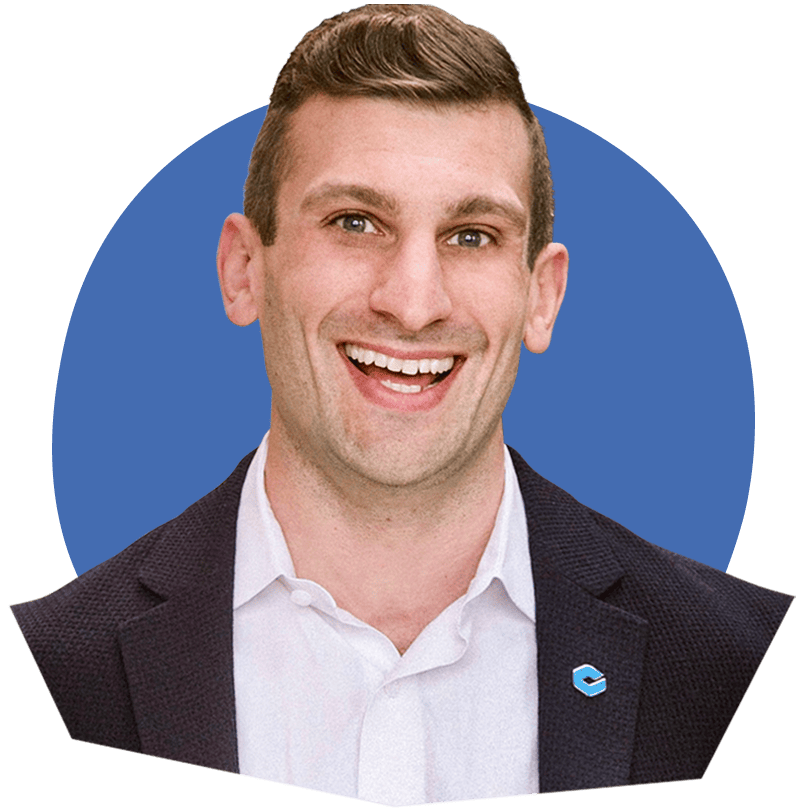
During his first major job as a construction site manager for the New York City subway system, Jason Gates learned that waste disposal is, to put it bluntly, a raging dumpster fire. Hauling companies pick up dumpsters on a fixed schedule, whether they’re full or not. It not only wastes money, it generates extra emissions from unnecessary truck trips. There’s no way to monitor what gets tossed in a dumpster. In fact, companies often don’t even know where all their containers are.
So he and his cofounder hatched an idea: Outfit the bins with networked cameras that reveal where they are, what’s in them, and how full they are. Compology, launched in 2013, equips each smart dumpster with a camera that analyzes the stuff inside. The tech uses artificial intelligence to gauge fullness and classify the waste within. It can tag trash that doesn’t belong in recycling bins, like plastic bags jammed in a receptacle for cardboard. By reducing pickups, the system reduces truck miles. By ID’ing the contents, it can improve trash streams and recycling.
By reducing pickups, the system reduces truck miles and emissions, says Gates. “It is a tangible change that does add up.”
This data allows garbage to be metered like water or electricity — customers only pay for what they need. It helps companies meet sustainability goals and creates an incentive to reduce waste. Compology works with about 1,300 brands, including McDonald’s and ADT. Miami recently adopted waste metering for its municipal buildings after a pilot project suggested costs could fall by 40 percent. “An individual dumpster of waste may not be the largest contributor to carbon emissions,” Gates says. “But when tackled at scale, it’s a tangible change that does add up.”
Carla Gautier Castro
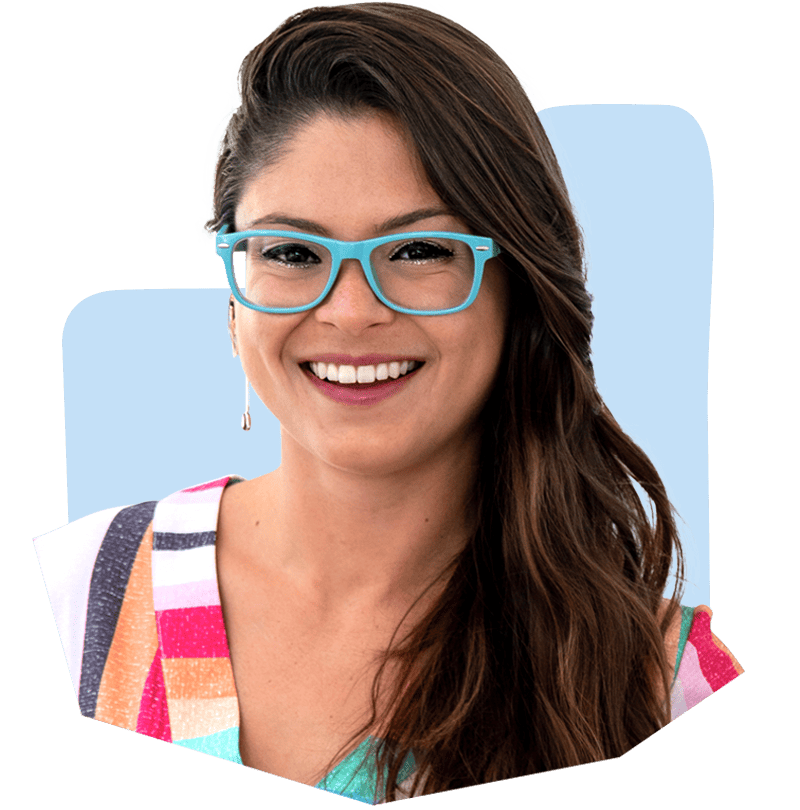
Carla Gautier Castro was already interested in all things sustainable when she started architecture school. So she was impressed when, during an academic tour of unconventional housing designs in Europe, she saw cheap, strong, readily available shipping containers repurposed as hostels.
She moved back home to Puerto Rico in 2017, just a few months before Hurricane Maria devastated the island. FEMA hired Gautier Castro as a construction inspector. Visiting hundreds of destroyed homes, she learned that many people had built them with available materials and without permits or adherence to building codes. They simply couldn’t afford to do it any other way. “We need to invest in helping them with something that’s safe, that’s engineered, and can be permitted,” she thought. Then she remembered the containers she’d seen in Berlin.
Gautier Castro envisions building and distributing shipping container-based units worldwide for disaster relief.
Steel shipping containers are designed to withstand heavy abuse. The structures fare better than concrete in earthquakes — which Puerto Rico also experiences. Besides, container homes can be produced offsite, loaded onto trucks, and installed anywhere, greatly reducing labor costs.
KONTi Design’s first home, a comfortable one-container house, was ready in 2019; a simple unit like that now runs about $80,000, she says. Some layouts are more luxurious: In February, a unit built from three and a half containers was finalized, and Gautier Castro expects it to be the Caribbean’s first platinum-certified LEED single-family home. Twelve more projects are underway. In the longer run, Gautier Castro envisions building and distributing container-based units worldwide for quick disaster relief — a homegrown industry helping people suffering through what Puerto Ricans have also endured.
Anyeley Hallová
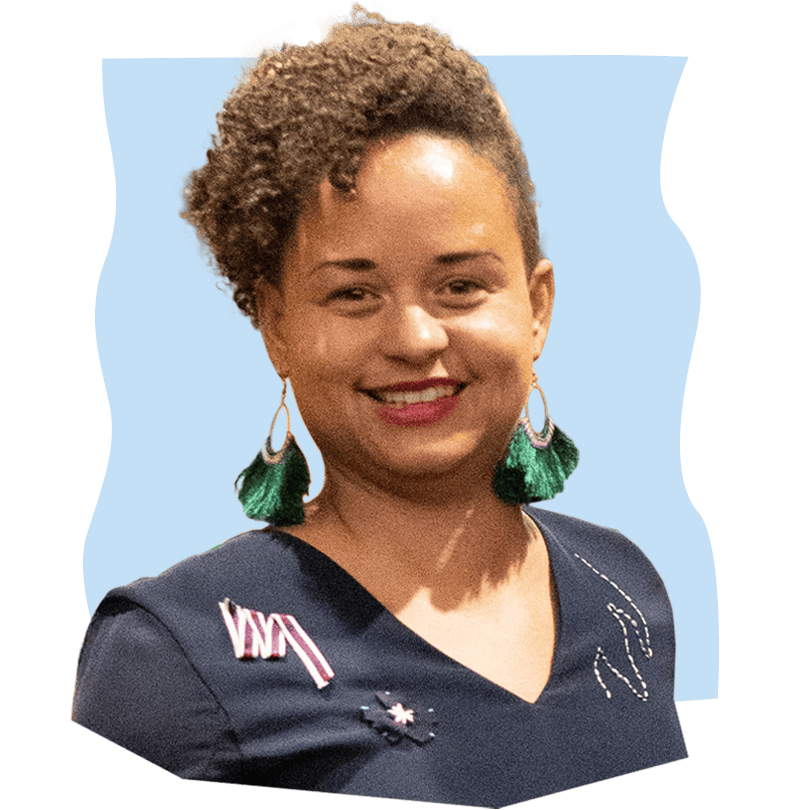
Back in the 1990s, Anyeley Hallová wanted to do what’s now called sustainable development. But she was ahead of her time. The term and the career didn’t exist yet. So she studied environmental systems technology at Cornell, then city planning at MIT, then landscape architecture at Harvard.
Hallová found work as an urban designer, but realized that developers hold the real power in sustainability. They’re the ones who assemble the team and make the big decisions about the details of a project. So even with good intentions, if a developer didn’t really get it, all those sustainability pledges fell by the wayside. She decided to become a developer who gets it.
She joined a premier sustainable development company in Oregon, then cofounded a new firm in 2008. One major project was Framework, set to be the first high-rise in the U.S. built with wood. It would use cross-laminated timber, a fire-resistant and carbon-sequestering building material that holds great promise for sustainable design and is earthquake-resilient. (The 2017 tax cuts gutted a major source of funding for the project, which stalled.)
Her firm, Adre, puts equity at the core of development, from whose land it is and who invests in the project, to who makes the buildings and occupies them.
A second major project combined construction innovations with a commitment to equity across its workforce, from the companies who supplied the timber to the subcontractors who constructed the building.
Now she’s launched her own firm, Adre, with equity at the core. “That’s all the way from thinking about whose land it is to who invests in the project, who makes the buildings, and who occupies them.” She’s building a center for the Black United Fund of Oregon, a Portland foundation, to house a consortium of organizations and programs focused on racial equity and sustainability. Hallová is also vice-chair for the state’s commission for land conservation and development, which is now working on improving housing equity and climate-friendly planning.
Julia Marsh

After about a decade in branding and packaging, Julia Marsh was sick of plastic, in particular the pouches, wrappers, and bags that are produced by the trillions each year and account for about 40 percent of the garbage in the world’s oceans. But she didn’t see many alternatives. Biodegradable options are fussy, expensive, or just don’t work with the infrastructure that churns out thin-film plastics.
In 2018, she visited seaweed farms in Indonesia and saw how they can sequester carbon without requiring fresh water or fertilizer, while also providing jobs for coastal residents affected by overfishing and other climate change-related threats. “It just clicked,” she says. Other inventors had tinkered with seaweed-based plastics, but she thought she could do more by making materials that are beautiful and practical.
She pitched her proposal at the Aspen Ideas Festival in 2019, sparking interest from multinationals like General Mills and Nestlé. It was time to launch her own company.
Other inventors had tinkered with seaweed plastics, but Marsh thought she could do more.
Sway won a competition organized by a consortium of companies like CVS Health, Target, and Walmart, and has funding to the tune of $2.5 million. Its first two products, which Marsh hopes to have in production by the end of 2022, will be retail bags and poly-bag sleeves that protect products during shipping. After that: Other applications will include mailers, bubblewrap, pouches, food wrappers, and other pervasive thin-film plastics. “We want to make the transition beyond the idea of sustainability to the new wave of regenerative, benevolent materials,” she says.
Ciara Imani May

Ciara Imani May started her own company to solve her own problem. In 2019, she was experiencing scalp irritation from plastic hair extensions, products commonly used by Black women. She also wasn’t wild about all the plastic she threw away every time she got her hair done. When she couldn’t find a sustainable alternative, she decided to make one.
She launched Rebundle in early 2021. Its first line of itch-free, biodegradable hair extensions, made from banana fiber, sold out almost immediately. “We just couldn’t keep up,” May says. “People are really excited. They appreciate what it is that we’re trying to do, answering a problem that has gone unaddressed for decades.” As it turns out, one in three women experience the same kind of scalp irritation from synthetic hair that May herself did.
“We created a space for Black women to have a voice around what sustainability looks like in our personal lives, with our personal care products.”
Rebundle also recycles plastic extensions for anyone not yet ready to make the switch. Demand for that service also quickly outpaced what May had envisioned for the first year of her startup, which currently employs six people, but the $1.4 million the company raised on its first birthday will help expand operations to continue to meet the need. May believes the immediate popularity of Rebundle’s extensions, and the infusion of capital, shows there’s a great hunger for greener options in the beauty world — for everyone. “I think we created a space for Black women to have a voice around what sustainability looks like in our personal lives, with our personal care products,” May says. “We’re setting the standard for clean and nontoxic. And eventually other brands will have to follow suit because it’s what the customers will demand.”
Sophie Purdom

When Sophie Purdom was in high school, she started an energy-reduction program that saved her school enough money to hire additional teaching staff. That early experience taught her a valuable lesson about how to engage communities in climate solutions.
“I learned that you can catalyze climate action by putting it in the context of the currency that matters the most to people,” she says. “So in that case, it was jobs. For other people it might be trees saved, for others it might be units of carbon. For most people it’s dollars.”
Purdom was surprised there wasn’t much talk about economics in her environmental studies courses at college. She wanted to learn about how finance influenced climate work. “I just kept showing up at the Brown [University] investment office,” she says. “I didn’t know anything about what an endowment did.” But she eventually landed an internship at the investment office and with the help of the university’s president, she and the staff started a sustainable investment fund out of the school’s endowment — something that had never been done before.
“I want to enable the whole next generation of climate-technology founders.”
To ensure that other students would carry on that work after she graduated, Purdom and a lecturer wrote and taught a sustainable investing curriculum. Six years later, that course is still going strong, but today the bulk of Purdom’s time goes to running the twice-weekly newsletter Climate Tech VC — a hub for demystifying all things related to climate innovation and the money deals going down in the world of green. In just two years, the newsletter has garnered 20,000 subscribers.
The details are still hush-hush for now, but Purdom is also launching a venture firm with a partner from the tech sector to invest in fledgling climate companies. “This isn’t solved through one silver-bullet solution,” Purdom says. “I want to enable the whole next generation of climate-technology founders.”
Gia Schneider
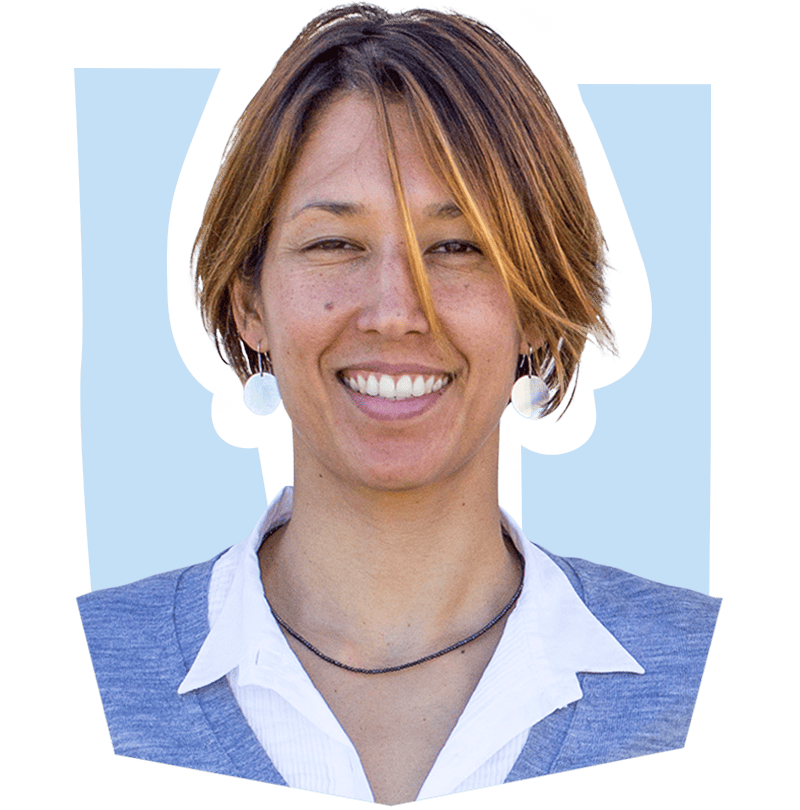
Gia Schneider and her brother Abe founded Natel Energy in 2009 with the goal of creating a hydropower system that would actually benefit ecosystems, while also bringing carbon-free energy to the grid. “The way that hydropower plants are designed has a big impact on their footprint within a river,” Schneider says. And a lot of that — the size of the dam, for instance — comes down to the design of the turbine that generates electricity. Schneider wanted to build a turbine that could keep the movement of a river as close to its natural state as possible.
“Our bar is greater than 99 percent safe for passing fish,” Schneider says. That’s achieved by a design that features thicker, more steeply slanted blades than the industry standard. The thickness allows the blades to essentially push ahead a layer of water, resulting in an airbag-like buffer that reduces the impact of blades on fish and other objects passing by. “And the slanted part basically means that anything that does strike it has more of a glancing blow as opposed to a direct hit,” she adds.
“Climate change is water change. We really see our solutions enabling better natural-resource management across the board.”
With the design finalized and regulatory hurdles cleared, Natel has begun implementing projects in the past year. The company builds new small dams and also modernizes existing structures, including a site at a historic canal in Oregon built in the 1940s. Schneider is also excited to see how the company can take on additional river-restoration projects at its worksites — things like extending or restoring wetlands and reconnecting rivers to flood plains.
All of this work is aided by Natel’s digital-services arm: an AI platform driven by satellite imagery and weather data that can help forecast things like water flow for hydropower and other applications. “Climate change is water change,” Schneider says. “We really see our solutions enabling better natural-resource management across the board.”
Timothy Barat

Growing up in small-town Australia, Timothy Barat dropped out of school to work with his hands. He found work as a lineman and learned a lot about how essential the grid is to everyday life — and how fragile it is. He eventually returned to school, and then, beginning in 2015, ripped through three associate degrees, and a bachelor’s and master’s in electrical engineering and computer science at the University of California, Berkeley in just five years. During his studies, he saw energy generation and storage technology accelerating, but few people focused on fortifying the grid infrastructure that connects them.
He knew from experience that the grid is in desperate need of improvements to prevent power outages and the massive wildfires now so common in California and elsewhere.
As a lineman he learned a lot about how essential the grid is to everyday life — and how fragile it is.
One of the biggest problems is the lack of data to detect pending disasters. “Utilities are unable to obtain ground truth measurements from the field frequently enough,” he says. He invented a device that attaches to utility poles to monitor grid performance and collect other data — providing lineworkers with a constant stream of information that “takes the guesswork out of linework,” he says. The boxes can detect, for instance, when a branch has fallen across the wires, allowing the utility to cut power and prevent a fire. The gizmos can also identify signal patterns that suggest an imminent problem, showing utilities where to target their repairs.
Barat had planned to stay in academia, but then the nightmarish 2018 Camp Fire, sparked by a bad transmission line, killed 86 people in Northern California. He launched Gridware at the end of 2020, and the company deployed its first devices in May 2021. It now has sensors in Southern California and Colorado, and is about to go live with six more utilities across Northern California, Washington, and Utah in the coming months. Four more utilities are on the waiting list.
Don Hankins
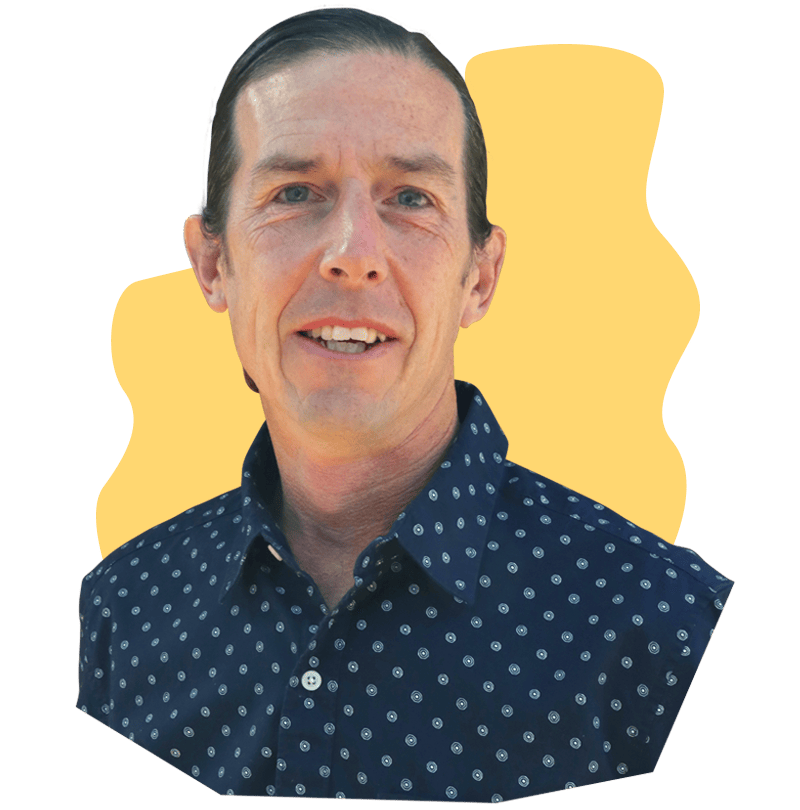
As a scientist, Don Hankins researches biodiversity, climate resiliency, habitat restoration, land stewardship, water policy, and a lot of other things. What that all boils down to: He studies fire and water, as in both of them together at times — even though many colleagues consider the two separate subjects. “From a cultural perspective, it’s all interrelated,” says Hankins. The droughts are becoming deeper and fire seasons are getting worse. Those two shifts are part of the same pattern.
Many colleagues consider fire and water two separate subjects. But, he says, “from a cultural perspective, it’s all interrelated.”
But he does more than observe and consider; Hankins, who is Plains Miwok, seeks ways to intervene. He predicts that applying Indigenous land-management practices will provide useful tools to help us and our landscapes adapt to change. In California, that could mean small, intentional fires set during the rainy season to burn off vegetation and tame massive fall infernos, which in turn could help trees adjust to climate change rather than get incinerated. Or during droughts, land managers might adapt an Indigenous practice of setting a small burn in a watershed area, preventing brush from slurping up all the groundwater.
Rather than focusing primarily on academic publishing, as some academics do, Hankins works hands-on with an alphabet soup of state and federal agencies, such as the Bureau of Land Management and the U.S. Forest Service, to make practical improvements to land stewardship and water management. “It doesn’t mean people have to follow all the Indigenous ways of doing things,” he says. “But it helps to know that context: What are some of the solutions, and how does it help us get where we need to be?”
Brett Isaac
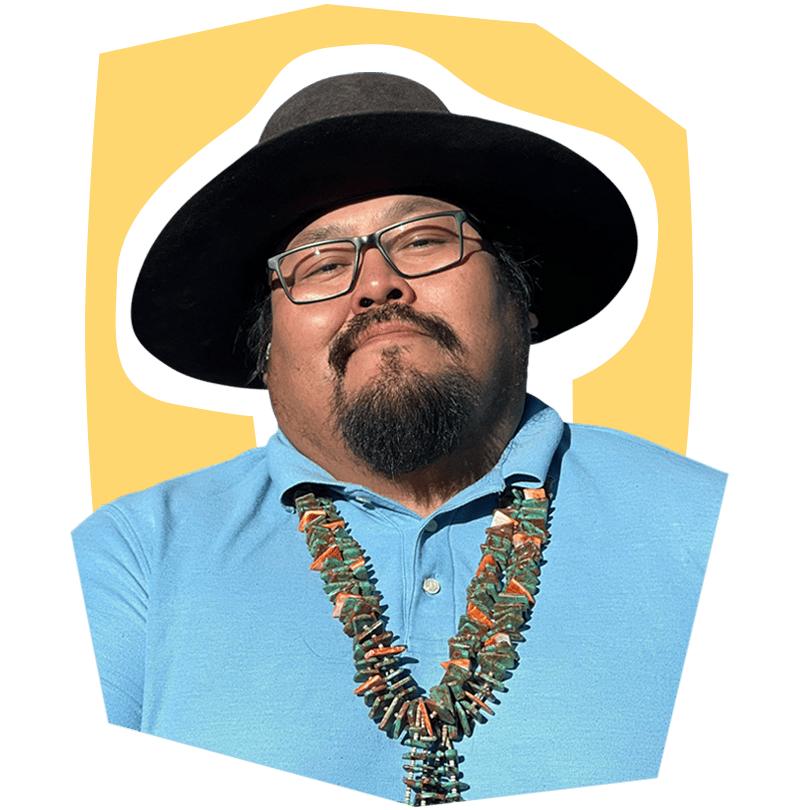
Coal has long been a constant in Brett Isaac’s Navajo community. The mine and the coal-fired Navajo Generating Station power plant provided jobs and royalties to the central Navajo Nation. But the real benefits went elsewhere. While the city lights of faraway Los Angeles sparkled with the plant’s electricity, 15,000 families on the reservation had no power at all. Meanwhile, Navajo residents lived with bad air and contaminated water. That inequity was written into the energy deals inked decades ago, Isaac realized. “Someone else was always financing our opportunities, and we were limited by that,” he says.
Determined to change the equation, Isaac learned how to build small off-grid solar systems for residents without electricity, but saw the potential for bigger projects. When the coal plant shut down in 2019, Isaac and Navajo Power cofounder Dan Rosen seized the opportunity to propose a new solar power plant that would make use of the existing infrastructure. Navajo Power, which has raised more than $10 million for this and other projects, hopes to begin building in 2023 and initially provide 200 megawatts of electricity — far less than the old coal plant, but still enough to power as many as 200,000 homes.
“Although we didn’t create the issue of climate and economic disparities, we have to own the solutions.”
Unlike previous energy projects, residents have a real stake in Navajo Power’s success. Among other considerations, the company is structured so that 10 percent of the ownership is held in trust for the community, and 80 percent of profits are reinvested into future community projects.
Navajo Power’s long-range plans are as big as the West. Isaac envisions more solar arrays and other clean energy projects on tribal lands throughout the region. “Although we didn’t create the issue of climate and economic disparities, we have to own the solutions,” he says.
Kelly Leilani Main
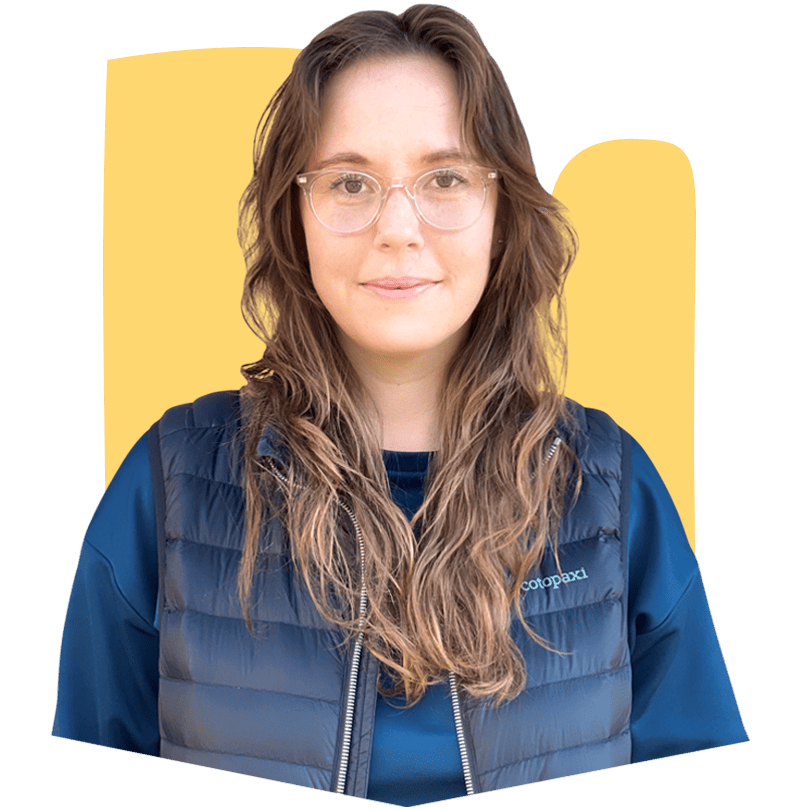
When she started working in urban planning, Kelly Leilani Main tackled evictions, gentrification, and other forms of unjust displacement around the world. But after hurricanes Matthew, Harvey, and Maria barreled through, she saw a new reality: Climate change, urban planning, and human rights are all mixed up together, forming their own turbulent, powerful vortex. “Climate change is the displacement crisis of our time,” she says.
Main saw something she could do about it. The federal government, through state and local agencies, finances buyouts of some houses damaged by floods or fires so owners can relocate, but the process is unfair and takes an average of more than five years. Many disaster survivors just give up.
“Climate change is the displacement crisis of our time.”
Main launched Buy-In Community Planning to build a better buyout process for flood-affected communities and individuals: The nonprofit helps residents and local authorities navigate the buyout bureaucracy, providing them with expertise, connections, and insight to secure funding and distribute it equitably. In De Soto, Missouri, for instance, they’re partnering with local organizations and officials to offer an option for residents of flood-prone areas to relocate.
The benefit of preparing for disasters, rather than just responding to them, is catching on. The Government Accountability Office recommended a federal climate-migration program that would help folks move before their communities are incinerated or swept away. Main says Buy-In Community Planning could help guide this process to ensure it is equitable and effective. Research suggests that pre-disaster buyouts in flood zones can save Americans more than a trillion dollars over the next century by reducing federal disaster-relief payments. Main also has begun building a national database to track who is leaving and where they’re going so governments across all levels can make smarter planning decisions. “We don’t have data about how many people want to move, and where and who they are,” she says. “We need to be ready for when people are ready.”
Shayle Matsuda
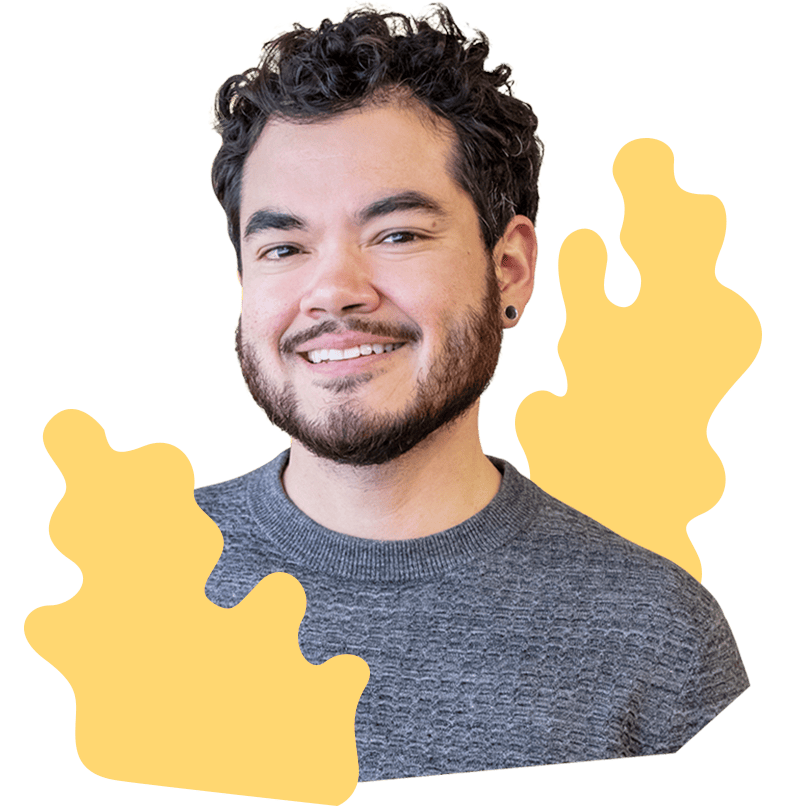
Shayle Matsuda’s first sense of the ocean’s grandeur came while visiting Shedd Aquarium in Chicago, and it blew his mind. “It made the world bigger,” he says. As a queer biracial kid growing up in the city’s suburbs, that image of a bigger world was grounding. Then, when he was in his late 20s, the sea delivered another life-altering experience when he learned to scuba dive. “It was amazing, beautiful, and calming,” he says — and littered with plastic.
At that moment, he decided to devote his life to studying and protecting coral reefs. He moved to San Francisco to take science classes and volunteer at the California Academy of Sciences. He also began another life pivot by coming to terms with his gender identity, and beginning a gender transition. For the first time, things just all felt right.
“All it takes is one story to change someone’s life. This is a time that really needs it.”
After earning his PhD in Hawaii, he returned to the Shedd this year as a postdoc, researching how to help coral survive climate change. He studies the coral microbiome, the amazingly complex communities of microscopic creatures that live in and on reef-building corals, and explores how that assemblage of organisms can help or hinder restoration projects around the world.
Matsuda also does a lot of science communication. He discusses his own experiences in order to increase visibility for LGBTQ+ people in research, and also to press for changes that improve the working life of all marginalized scientists. “All it takes is one story to change someone’s life,” he says. “This is a time that really needs it.”
Megan O’Connor
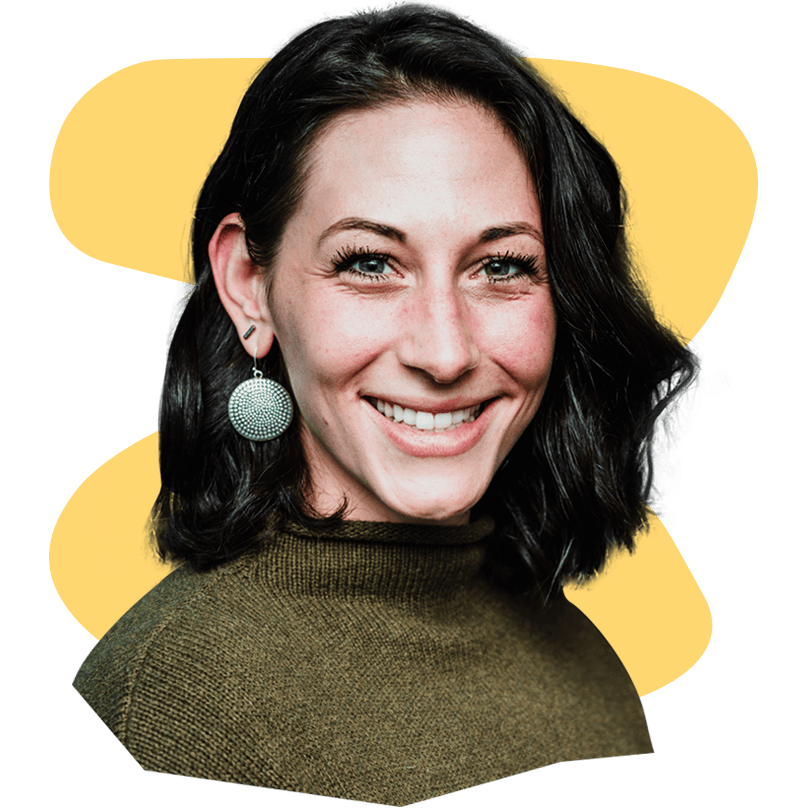
In March 2015, while she was a visiting student at Yale, Megan O’Connor overheard a conversation that changed her life. A professor mentioned an upcoming hush-hush summit. Reps from major tech companies would be gathering to discuss sustainability — in particular, electronics recycling.
O’Connor was already obsessed with the subject. She knew the transition to clean energy will require vast amounts of cobalt, nickel, and rare earth minerals to build batteries, turbines, and electric motors. Yet so much is wasted through inefficient mining and by dumping old devices in landfills.
She talked her way into observing the meeting, and saw a career unfolding in front of her. “They were worried about it,” she says. “They knew it was a massive waste-management problem. “
The transition to clean energy will require vast amounts of cobalt, nickel, and rare earth minerals — yet so much is wasted.
In graduate school, she learned about a filtration method developed by one of her professors to clean wastewater — kind of like an electrified Brita filter, she says. For her PhD, she adapted it to glean valuable metals from e-waste. The day after she defended her thesis in 2017, she and her profs decided to launch Nth Cycle to bring the technology to the world.
Recyclers can use it to extract cobalt or nickel from dead batteries. It’s an alternative to shipping bulky waste thousands of miles to a facility that scorches the stuff at thousands of degrees to free the metals. The Nth Cycle system is designed to be set up at a mine or recycling plant, and will soon be in pilot mode.
Sagatom Saha
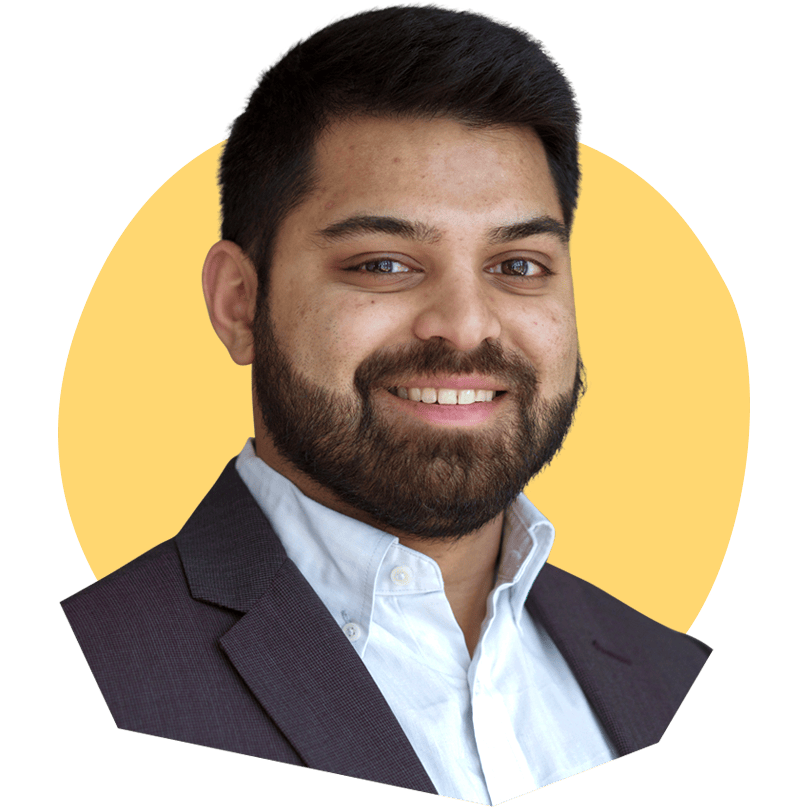
As early as high school, Sagatom Saha knew he would join that whole Washington world of diplomacy, national security, and foreign policy. Climate and energy weren’t even on his radar. Slowly, he began to understand how energy demand shapes geopolitics and, especially, how the transition to clean energy will transform economic relationships.
Following stints with the Council on Foreign Relations and time on the ground researching in Ukraine, Saha joined the Department of Commerce in 2020 to work on clean energy innovation and competitiveness in the U.S. He was posted to the office of the Special Presidential Envoy for Climate to work with John Kerry. There, his remit is the global economics of surging demand for products like wind turbines, solar panels, and nuclear reactors — and how to capture it to create jobs in the U.S.
Small, modular nuclear reactors can feed power-hungry manufacturing or desalination plants, and the U.S. leads in this technology.
From this view, Saha sees what others might miss: that even the strictest domestic policies won’t address the roughly 87 percent of emissions that happen abroad. To address that problem, our nation can apply its skill at developing and industrializing clean energy technologies — and creating new markets — to sell worldwide.
Saha also focuses on small, modular nuclear reactors. These tiny nukes can generate electrical power for the grid, or be used in desalination or to feed power-hungry manufacturing plants. Thanks in part to heavy investments from the Department of Energy, the U.S. leads in this technology. “We know how to build them. We can get them out the door soon if we put the pipeline in place today,” says Saha, but the market still needs help, from diplomats, investors, and other players. At the international climate conference in Glasgow, Romania announced plans to buy six. Saha will help make it happen.
DeAndrea Salvador
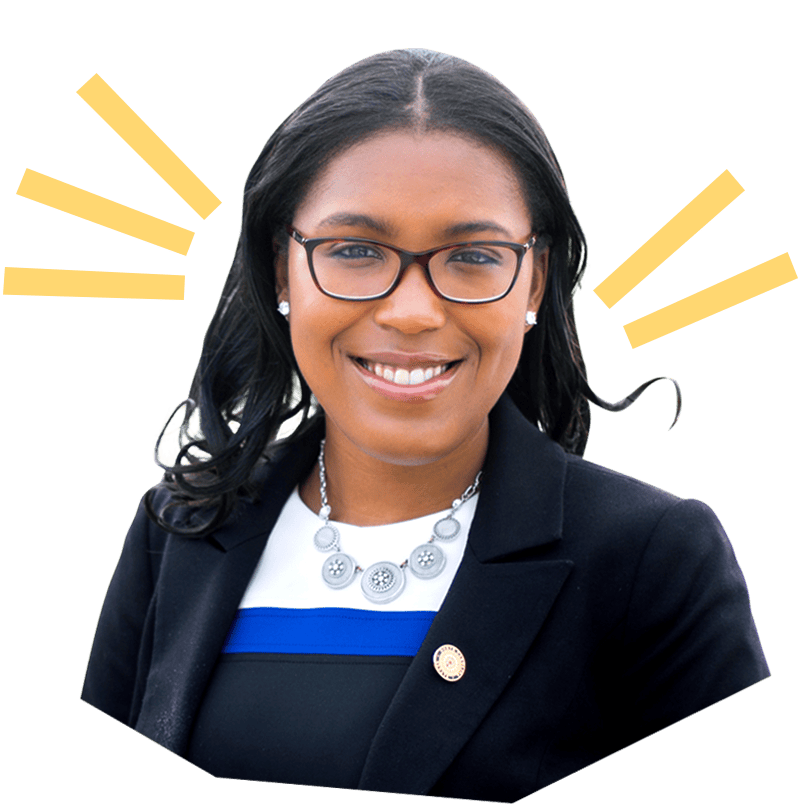
When North Carolina redrew its legislative districts in 2019 it created an open state Senate seat that just happened to include DeAndrea Salvador’s childhood home, church, high school, and many of the neighborhoods where she’d worked as a community advocate. “Could I be the right person?” she mused. The answer was yes. She won the election and became the youngest person serving in the state’s Senate — and its newest climate champion.
As a freshman senator, Salvador helped negotiate a law that requires significant emissions cuts for the energy sector by 2030 and carbon neutrality by 2050. “It was easily the largest piece of legislation in North Carolina last year,” she says, and passed with bipartisan support. Next, she has her sights set on infrastructure and transportation, such as ways to support the governor’s recent executive order to increase sales of electric vehicles.
She won the election, becoming the youngest person in the state’s Senate — and its newest climate champion.
Technically it’s a part-time job, so she’s still involved with Renewable Energy Transition Initiative, the nonprofit she founded in 2014 to help educate residents about energy options and advocate for equity in the shift from fossil fuels. “When we formed the organization, the idea was: How do we make [the] energy transition more equitable? How do we address energy burdens?” Projects have included a smart home effort, implemented in about 50 households, to install internet and technology like smart thermostats to reduce energy costs. The org also hosts educational initiatives to help residents save energy and lower their bills, while pushing for policies that will help lower-income residents access renewable power.
Laura Zapata
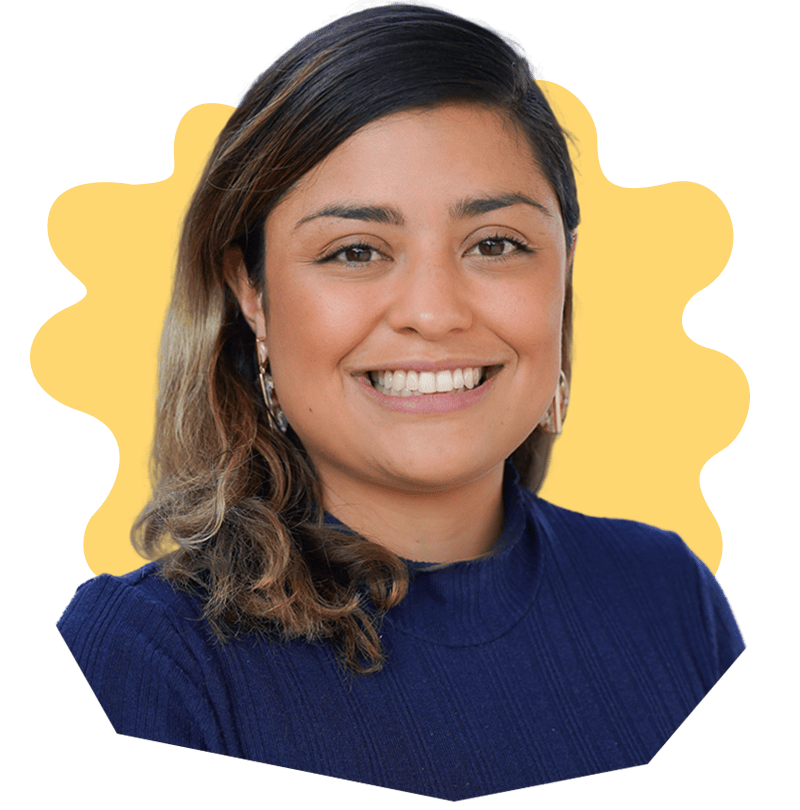
The promise of the DREAM Act, hotly debated while she was in high school, is what pulled Laura Zapata into politics. Her family had emigrated from Colombia to Tennessee when she was 10. Their immigration status was secure, but her worries about her friends inspired her to jump into organizing and advocacy. “The idea of the American dream was so important, and it was clear that politics was the way” to make it accessible to all, Zapata says. She studied government in college, worked with various political and corporate communications teams, then returned to Tennessee in 2018 as communications director for former Governor Phil Bredesen during his run for U.S. Senate.
“Government is not going to move fast enough” to shift the nation to clean energy, she says. “That’s the genesis and thesis of it.”
His loss pulled her back out of politics. That year, she, Bredesen, and campaign manager Bob Corney launched a business instead. Bredesen was a solar-power entrepreneur; his idea was to generate more funding for solar projects by assembling investors seeking climate solutions, including carbon offsets. Typically, these investors are companies that pledge to improve sustainability in response to consumer, employee, or shareholder pressure. Investing in new renewable energy plants allows them to apply carbon credits against their own emissions. Zapata says the team’s background in politics and communications helps them introduce clients to this market-based approach. “Government is not going to move fast enough” to shift the nation to clean energy, she says. “That’s the genesis and thesis of it.”
Clearloop launched in 2019; Bredesen’s company, Silicon Ranch, acquired it last fall. Clearloop focuses on building in parts of the country where the grid remains very “dirty” — solar provides just 0.4 percent of Tennessee’s electricity, for example — to make “the biggest bang for the buck,” she says. Clearloop’s first small solar farm, in Tennessee, should be fully operational this summer; Zapata says two plants in Mississippi and another in Appalachia are in the works.
Jason Chow

He’d grown up fishing and diving in Hawaii, so Jason Chow noticed when the fish started disappearing, and he wanted to do something about it. He earned a degree in marine biology, but since few conservation and management jobs were available, he worked at restaurants while interning with natural resources groups.
That expertise turned out to be perfect for a project launched by Conservation International to create a community-supported fishery in Hawaii. It was a success, but Chow knew from his time in kitchens that there was no equivalent for local meat. Up to 90 percent of the food eaten in Hawaii is imported. “As an island you can only rely so much on outside sources,” he says.
Up to 90 percent of the food eaten in Hawaii is imported. “As an island you can only rely so much on outside sources,” he says.
That insight launched another quest. He moved to California to learn butchering and business know-how at The Local Butcher Shop, an innovative specialty shop in Berkeley. He and his baker wife, Harley Tunac, returned to Hawaii and opened The Local General Store in 2019. It provides locally grown beef, pork, venison, and chicken, as well as croissants and pastries, at farmers markets and pop-up locations. “It’s our effort to not just make food, but make us a more sustainable island,” he says.
In the past, almost all of Hawaii’s many ranchers shipped their cattle all the way to the mainland before slaughter. But Chow says ranching is starting to change. More animals are raised and slaughtered entirely in the state, and local meat is becoming more widely available. He is now working closely with ranchers to improve the quality of locally raised beef.
Amy Huang

Changing the way we think about meat is a massive project. But Amy Huang has equally enormous motivations — to improve the lives of the trillions of animals raised for slaughter every year, as well as those of the billions of people now and in the future who deserve a clean, habitable planet. “The mission is a food system that serves everyone,” she says.
The Good Food Institute, where Huang works, wants to replace meat with ingredients made from plants, animal cells, and other sources that can provide the taste and nutrition without the cruelty and ecological cost. Her role in this transformation? Inspiring and training university students to create the future of alternative protein themselves. “Students are often catalysts, but they rarely get to see themselves in that light,” she says.
“The students have begun to prove that this model can shift the trajectory of the food system.”
She and her collaborator realized that students were perfectly positioned to advocate for new classes or projects that could advance the alt-protein cause. “These students have successfully launched some of the world’s first alternative-protein courses and inspired dozens of scientists to pursue alternative-protein research,” she says. For instance, students recently organized and launched a course called the Cellular Agriculture Revolution at the University of North Carolina. It filled up in a matter of days. “The students have begun to prove that this model can shift the trajectory of the food system.” She now counts 18 alt-protein classes, including at Stanford and Johns Hopkins, 16 student groups up and running, and dozens waiting to start. Huang is adapting her approach in the hopes of launching hundreds more worldwide.
Kimberlie Le

“I like to say I live to eat,” Kimberlie Le says. Her mother was a professional chef, so Le essentially grew up in kitchens. She also was a competitive snowboarder when she was young, even entertaining dreams of the Olympics, which instilled in her a love for the environment.
Those two passions merged during her college years when she began learning about the massive environmental problems associated with animal agriculture. She knew then that she wanted to devote her life to finding greener alternatives.
As a meat lover, Le was turned off by the taste and long ingredient lists of many plant-based options. “To me, making plants into meat is like fitting a square peg in a round hole,” she says. “You have to do so much heavy processing to get it to a place where it even kind of mimics meat.”
“To me, making plants into meat is like fitting a square peg into a round hole.” Her company looked to another kingdom: fungi.
Her company, Prime Roots, looked instead to another kingdom: fungi. All of its products are made from koji, the same tasty mycelium that gives its umami flavor to soy sauce and miso paste. Its fibers naturally replicate the texture of meat, but it grows in just a few days and uses only a fraction of the resources that livestock farming requires, from land to water to fossil fuels.
The company started out making a range of products, from lobsterless lobster to baconless bacon, based primarily on input from consumers. Now, it’s turned its attention to the deli. Americans eat a lot of burgers — around 150 a year on average — but they eat closer to 200 sandwiches, Le says. Prime Roots lunch meats and charcuterie will launch later this year, starting in restaurants and then grocery stores. Her personal favorite: koji Black Forest ham. “It’s really, really true to the ham that I remember growing up with,” she says.
Leah Lizarondo
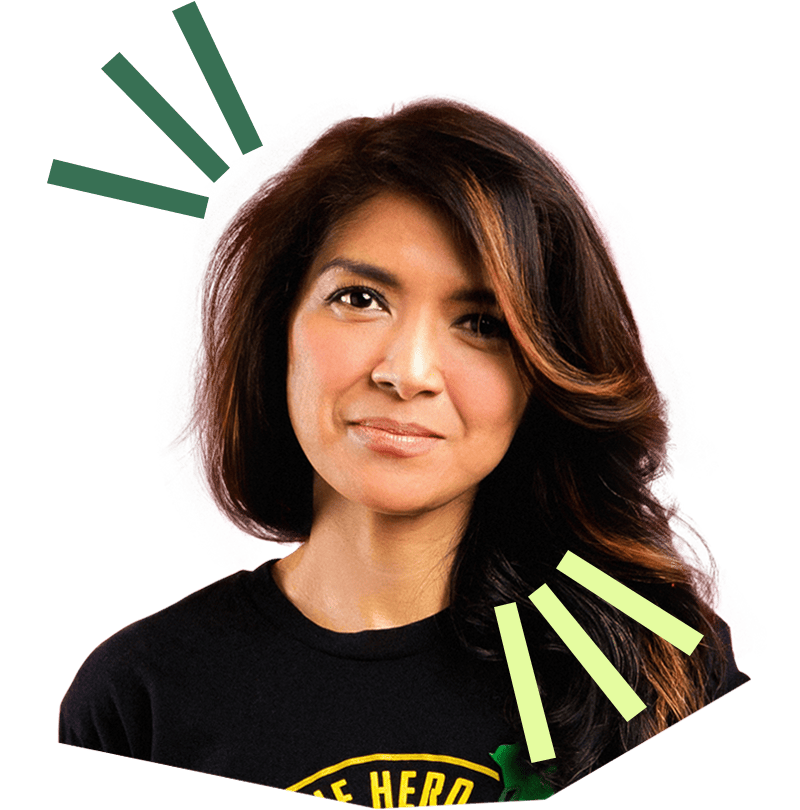
During her time writing about food in Pittsburgh, Leah Lizarondo heard her restaurant industry friends lament how much food they threw away every night. Some went so far as to deliver it to food pantries and churches. But even she didn’t realize how big the problem is until she came across a 2012 report that estimated 40 percent of the food in the U.S. is wasted.
Galvanized, Lizarondo found collaborators and marshaled a brigade of volunteer food-deliverers — organized at first by text messages, then through social media, and then, as their numbers swelled, an app. They took their project to established hunger-relief organizations, but they weren’t interested. So in 2015, they founded the nonprofit 412 Food Rescue, and she launched the tech platform Food Rescue Hero the following year. “I’m an accidental entrepreneur,” she says, laughing.
“Everyone wants to do something. The desire is there. This just gives them the information.”
The technology works like DoorDash but in reverse, and for extra food. Volunteers sign up to collect surplus from restaurants and groceries, and deliver it to kitchens and pantries. In 2018, they expanded to Philadelphia, Cleveland, and San Francisco, and now claim 16 cities. Local food-relief organizations license the app and use it to organize driver networks. “We power other food-recovery organizations, so they can scale in that city,” Lizarondo says.
Food Rescue Hero’s goal is to add 10 cities each year, hitting 100 by 2030. At that rate, it will have saved 2.5 billion pounds of food from the landfill by then, according to a study conducted with Deloitte. “Everyone wants to do something,” she says. “The desire is there. This just gives them the information.”
Aidan Mouat

Aidan Mouat loves food — particularly, food preservation. He makes his own cheese and charcuterie, distills his own liquor, and brews his own beer. “The history of civilization and food is the history of preservation techniques,” he says. He also loves chemistry and has earned multiple degrees in the subject including a PhD.
In 2015, he brought it all together with Hazel Technologies, developing preservation techniques to take a bite out of the monumental waste in our food supply — about 31 percent of the food in the U.S. is lost at the retail and consumer levels alone. “I make, through chemistry, the things I want to see in the world,” he says. “Connecting chemistry to agriculture was revelatory: I can contribute something positive.”
“I make, through chemistry, the things I want to see in the world.”
Plants constantly detect chemical signals in the air; interrupting or amplifying those signals can keep fruits and vegetables fresher for longer. Hazel’s first product, released in 2016, is a sachet that steadily emits a gas to slow the natural ripening process in fruits like melons and apples. The chemistry was familiar, but difficult and inefficient to use. The innovation lies in delivering it with time-release packets that ride along with produce.
Hazel now offers a portfolio of “active packaging materials” — sachets, pads, pouches, and pieces of paper that release compounds fine-tuned to improve the shelf life of produce — that protects against everything from rotting to sprouting. Mouat says Hazel’s products protected 5.7 billion pounds of food in 2021, preventing spoilage and waste that would have released about 325,000 metric tons of CO₂. He expects double those numbers in 2022.
Michael Robinson

For Michael Robinson, the appeal of community composting goes beyond reclaiming waste from restaurants and grocery stores, or improving Cleveland’s community gardens, or enabling more food to be grown locally. It is all of those things, plus a way to link up a lot of his values. “I thought, ‘Wouldn’t it be awesome if we had a cooperative working to make more resilient food systems and also build climate resilience in our region?’” he says. “It was that overlap.”
In 2014, he and Dan Brown launched Rust Belt Riders with $1,500, a bicycle, and a bike trailer, hauling 300-pound loads of food scraps from restaurants to community gardens. They bought a truck in 2016 and began working with hospitals and other institutions eager to improve their sustainability metrics. When the pandemic interrupted commercial food-waste hauling, they focused on residential services, expanding from about 10 customers to over 2,000. Last year, RBR launched a gardening-and-farming soil business to sell that rich compost, blended into soil mixes for various growing purposes (including one for cannabis).
“Wouldn’t it be awesome if we had a cooperative working to make more resilient food systems and also build climate resilience in our region?”
At the end of last year, Rust Belt Riders became what Robinson envisioned: A worker-owned cooperative where members have equity, access to company financials, decision-making power for major initiatives, and a governance structure that puts the workers in charge. As part of a nationwide coalition of like-minded community-composting companies, Robinson hopes to create a federation of workers’ cooperatives that can band together to share resources and, eventually, create a recognizable brand of organic soil blends to be created locally and sold across the country.
Haley Russell
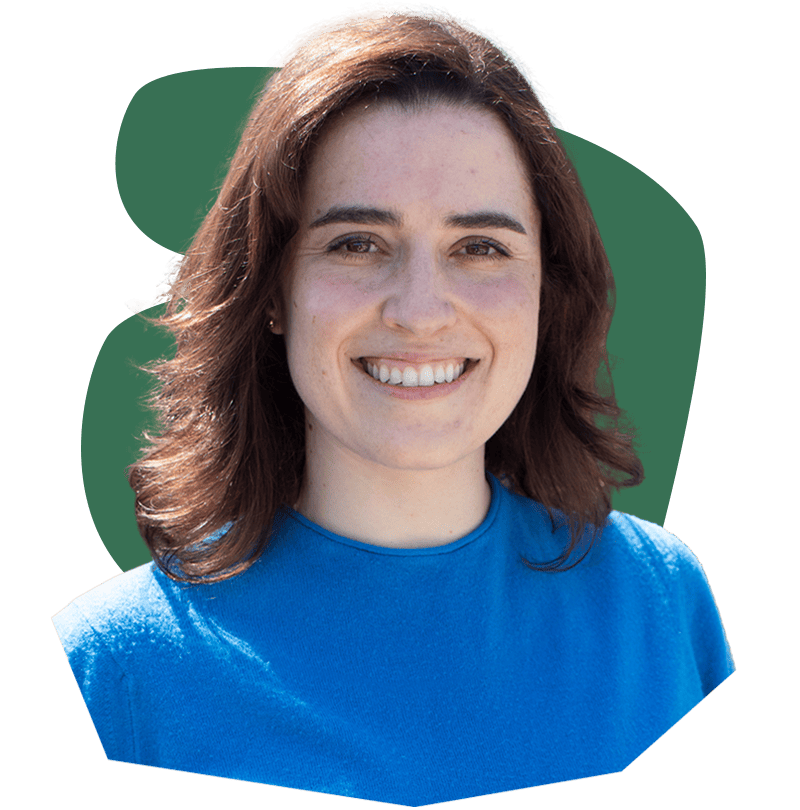
When Haley Russell heard the buzz about insects as the next superfood — one that could displace land- and carbon-intensive livestock — she had to try it for herself. She landed a couple of grants to start a small cricket farm, but taste tests with friends and family didn’t convince her crickets are the next “it” protein. But when her dog, Wren, ran into the kitchen, Russell got an idea. The otherwise picky goldendoodle seemed to love the treats Russell had prepared. “I started to follow this line of, ‘Could we bring more planet-friendly proteins to the pet-food space?’” Russell says. And her company, Chippin, was born.
Although the name sounds like something a cricket might say, it refers to the idea of “chipping in” for the benefit of the planet. “If you consider U.S. pets as their own country, they rank fifth in global meat consumption,” Russell says. And yet eco-conscious owners who have embraced plant-based diets for themselves don’t have those kinds of alternatives for their pets. “When you’re looking at basically every other consumer category, there are options to get high-quality and eco-friendly goods,” Russell says. “Pet food was totally left behind.”
Her thought: “Could we bring more planet-friendly proteins to the pet-food space?”
Russell wanted to make a nutritious treat pets would go crazy for. Unlike people, dogs generally don’t eat according to their values — they just want something scrumptious. Chippin is exploring three kinds of alternative proteins: insects, invasive or overpopulated species, and algae. Its first line of kibble is made with silver carp, an invasive fish posing a threat to the Great Lakes region. For now it’s just dog food, but Russell says the most frequent request she hears is for Chippin cat products, which are in the works.
Pandora Thomas
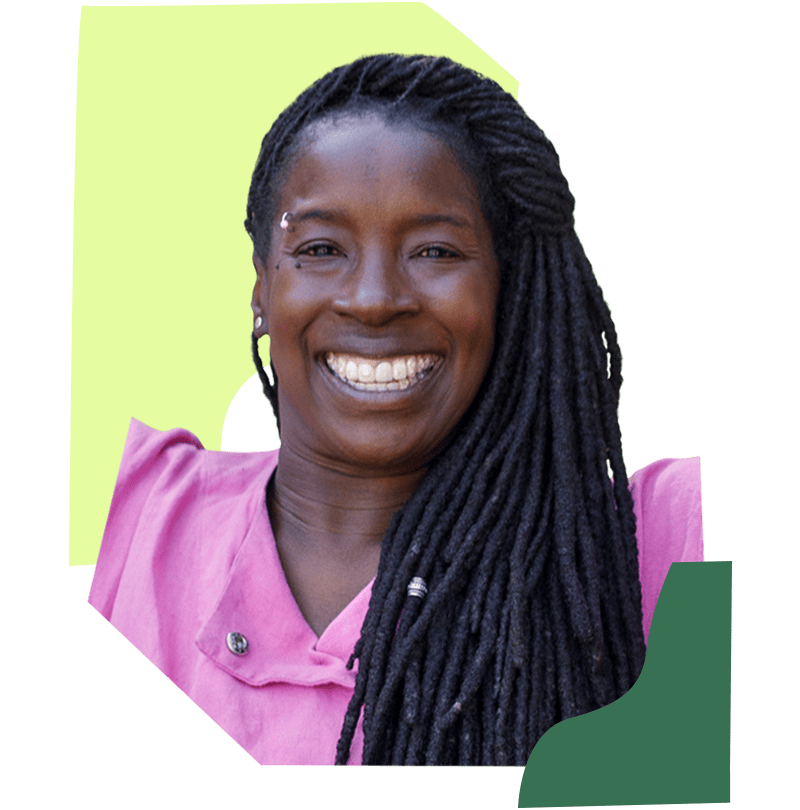
As a young person, Pandora Thomas knew she wanted to care for more than human beings. Her parents were always environmentally ethical, although not self-identified activists: “It’s just the people they were,” she says. It all started to click in graduate school for theology, and then for urban planning, where she read the eco-visionary work of the Black novelist Octavia Butler and learned about permaculture.
Permaculture can be described as a way of thinking, a subculture, and a system of ecological design principles for sustainable agriculture. In its best-known version, it focuses on technologies like solar power and rainwater catchment. But the version Thomas is developing includes sustainable social systems and older techniques that have been or could be adopted from Indigenous practices, such as reviving traditional crops that could build soil or withstand drought. “That’s my ancestral purpose: to support diverse communities — specifically Black communities — to reclaim our earth connection and design our communities and future based off of that,” she says.
Now, her big project is Earthseed Farm — 14 acres of orchards, berry bushes, and herbs in California’s Sonoma County purchased in 2021 through donations.
For Thomas that takes many forms, including learning to farm, teaching permaculture design, and facilitating climate-resilient community planning. In Marin City, for instance, a historically Black community just north of San Francisco, she worked as a partner at the Urban Permaculture Institute convening residents to design flooding infrastructure, including plant-lined drainage trenches and rain gardens to soak up stormwater. Core to the process is training community members in permaculture principles, which enables them to design more resilient landscapes themselves. About 30 have been trained so far.
Now, her big project is Earthseed Farm — 14 acres of orchards, berry bushes, and herbs in California’s Sonoma County purchased in 2021 through donations from about 500 people. It is named for Butler’s most famous books, a series about a future community formed under apocalyptic conditions. The farm will also be an education and retreat center that hosts programming for diverse communities taught by people of Afro-Indigenous ancestry, including permaculture techniques; training in community organizing; and casual get-togethers, such as “Black to the land” gatherings.
Mark Watson

Mark Watson was a self-proclaimed city kid who started his career in the traditional finance world. But through impact-focused work with organizations like the Boston Impact Initiative Fund, Triskeles Foundation, and Fair Food Fund, he became interested in farming — and later, the intersection of farming, climate, and justice.
Watson had experience in impact investing, but he wanted to take an even more holistic approach. “The bar now is systems change,” he says. “It’s how do you use capital — and not just financial capital — to influence whole ecosystems to be more just? And climate is part of justice.” So he launched Potlikker Capital, named for the nutritious broth left behind after simmering a pot of greens. The org, which is awaiting its nonprofit status, invests directly in BIPOC farmers who use, or want to transition to, regenerative farming practices. As Watson notes, that’s not just buzzworthy sustainable ag talk; it hearkens back to the ancestral ways of African and Indigenous farmers. “Those farming practices already had embedded in them a sense of care and appreciation for the environment and how it supports humanity,” he says.
“Potlikker’s role is to supply what we call ‘reparative capital.’ ‘Reparative’ means repairing the earth, repairing community, and it also means reparations.”
The organization gives out a mix of grants and low- to no-interest loans to support farmers. Some of that work is led by its supported organization, Jubilee Justice, which guides growers in the transition to more climate-friendly practices. Together, the two groups foster supportive farming communities that share knowledge and equipment.
“Potlikker’s role is to supply what we call ‘reparative capital,’” says Watson. “‘Reparative’ means repairing the earth, repairing community, and it also means reparations.”
Moñeka De Oro
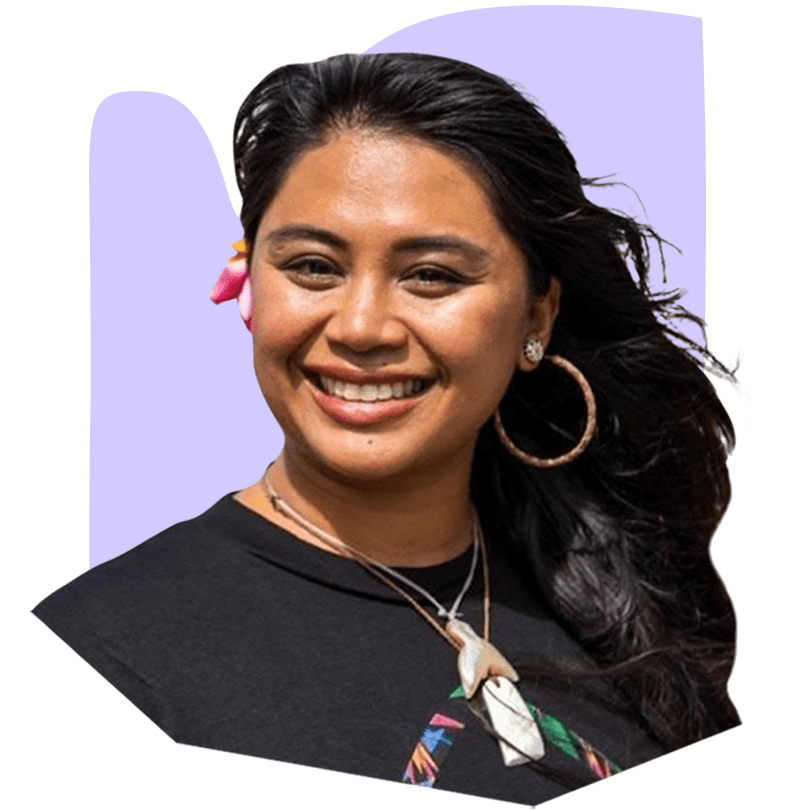
When your home is a small island in the Pacific, climate change and a just transition aren’t future worries; they’re real today. That urgency fuels Moñeka De Oro’s advocacy for the people of the Northern Marianas, Guam, and neighboring nations, such as the Federated States of Micronesia, Palau, and the Marshall Islands. Her efforts include campaigns for sovereignty and self-determination, and demilitarization of U.S. territories like Guam and the Northern Marianas (which, like Puerto Rico, is a U.S. commonwealth). These islands all host large numbers of U.S. armed forces, military bases, and training sites. De Oro calls the military presence “a machine that takes and takes, and doesn’t give back a lot,” pointing to ecological damage and destruction of ancestral cultural sites. “There isn’t enough done to hold the military accountable for its role in perpetuating the climate crisis,” she says.
“It’s really important to ensure the next generation is equipped with the tools to be resilient.”
She joined the fledgling Micronesia Climate Change Alliance as a staff member in early 2020, working on community-based solutions for problems such as illegal dumping, among other projects. The group also assisted in launching a climate-focused youth coalition that has grown to more than 100 members and is organizing an island-wide competition to create art from trash.
With support from Guam Green Growth Initiative and the Massachusetts Institute of Technology, De Oro is developing a climate literacy curriculum for K-12 students throughout the Mariana Islands; the goal is to begin teaching it in schools by 2025. “It’s really important to ensure the next generation is equipped with the tools to be resilient.”
Wes Gobar

When Wes Gobar was brought on to help build Evergreen Action, a political advocacy group started by veterans of Jay Inslee’s 2020 presidential campaign, he was the only person of color on the team. “I had no climate background and was trying to find my voice,” he recalls. And he did — moving quickly from an assistant position to deputy press secretary to coalitions lead. In his current role, he builds relationships across the climate movement, seeking feedback on things like political priorities from other groups working toward a common goal. “I feel proud about making Evergreen a better version of itself, and the version of itself that the movement needs it to be.”
But he also felt the need to invite more Black people into the climate fight — and to build a community that would support them and, he says, “share the resources that have helped myself and others thrive in this space.” With a couple of friends, Gobar started BlackOak Collective in 2020 as a hub for Black environmental professionals. The fledgling network has over 80 members from across the country, although the focus is on the D.C., Maryland, and Virginia region, where Gobar and his cofounders are based and where a number of national organizations are headquartered.
He felt the need to invite more Black people into the climate fight — and to build a community that would support them.
BlackOak hosts virtual and in-person events, maintains a public jobs board, and works directly with students at HBCUs and other colleges, offering mentorship and plugging Black youth into green-job pipelines. “We know that people who are white and wealthier and better connected are more likely to have someone who can tell them how to navigate a process or where to apply and which opportunities to look at,” Gobar says. “BlackOak is really trying to level the playing field there.”
Bekah Hinojosa
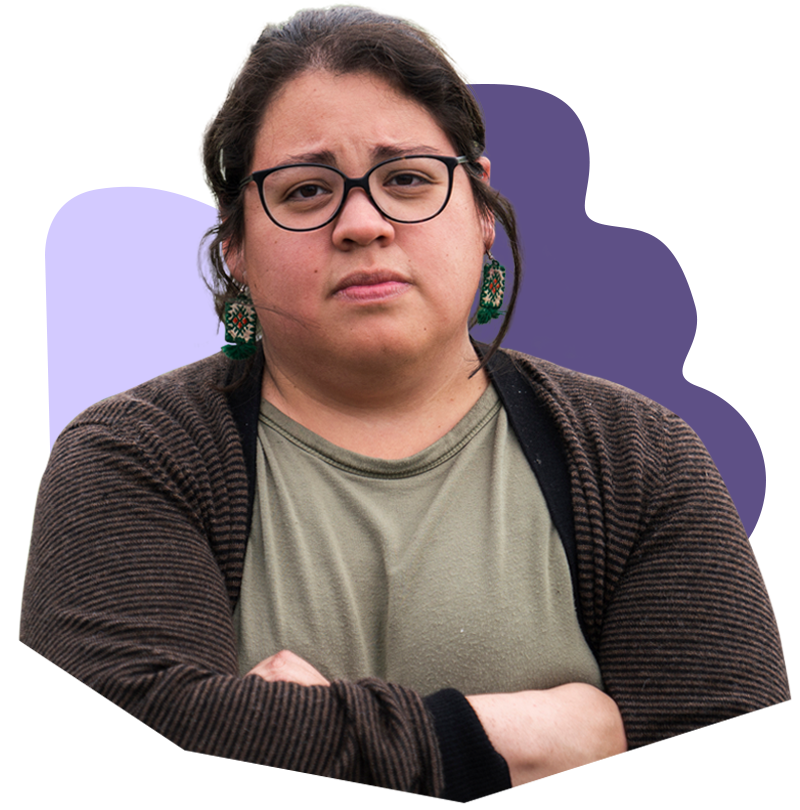
The Rio Grande Valley is among the poorest parts of Texas, with low education rates and high rates of cancer. Bekah Hinojosa’s family has lived there for many generations and has a long tradition of working to solve local problems. While in middle school, Hinojosa attended a meeting with her parents about a local Superfund site, where she heard an organizer who thrilled her. “She was speaking very passionately,” says Hinojosa. That night, she made a decision: “I want to help people in our community, just like she is.”
Hinojosa went to college in north Texas, where fracking was happening on and off campus, and eventually returned to Brownsville to volunteer on campaigns against three proposed liquified natural gas (LNG) terminals. In 2016, she joined the Sierra Club as an organizer, as part of a coalition of environmental groups, the Carrizo/Comecrudo Tribe of Texas, local shrimpers, and fishermen opposing the projects. Their strategy is “death by a thousand cuts,” she says; they’re filing lawsuits, requesting further federal review, pushing banks to divest, pressuring local districts to end tax abatements, and even joining forces with European communities to shut down the overseas import terminals that would receive the shipments. One company canceled its LNG plans last year.
Their strategy is “death by a thousand cuts,” including lawsuits, requests for federal review, and other efforts.
Hinojosa also works with the grassroots collaborative Another Gulf Is Possible to oppose plans by Elon Musk’s SpaceX to build an LNG plant near Brownsville and launch the Starship craft with its enormous Super Heavy rocket. The LNG projects and SpaceX need federal regulatory approval, and the group is pressuring officials to think twice — and also bringing community attention to the issue with stickers, lawn signs, and even a float in the local parade.
Amara Ifeji
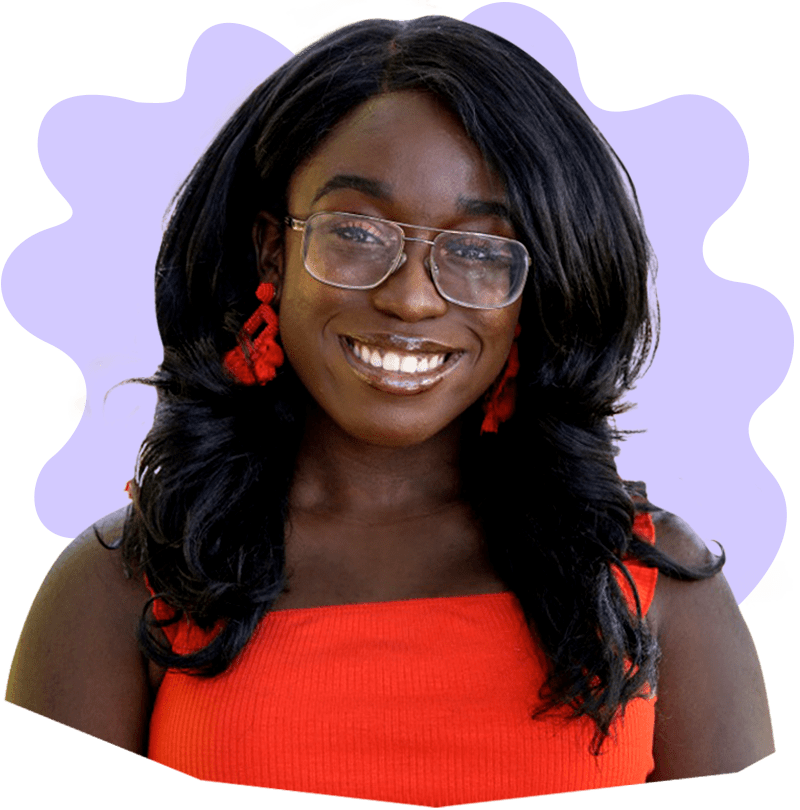
Even though Amara Ifeji’s family moved from the Washington, D.C., area to Maine when she was young, she didn’t have a solid opportunity for outdoor environmental education until she was 15, through a summer school program focused on water quality. “It solidified my passion for the natural world,” she says. But the next year, the funding ran out — robbing other students of the experience.
She decided to fill the gap. Ifeji launched a weeklong ecology summer school for 20 female-identifying students. “They had curiosity about the natural world, but the education system had failed them,” she says, by denying them opportunities to learn outdoors. She raised money for supplies, and students built water-quality sensors, toured a wastewater plant, and drew samples from the Penobscot River. They reported their findings to the community and won recognition at the state science fair.
“They had curiosity about the natural world, but the education system had failed them,” says Ifeji of her students.
At the same time, Ifeji led a petition drive at her high school to demand that the school district address racial injustice. (The effort drew over 6,500 signatures.) She considered the two projects separate, until at 16 she attended a meeting of the Maine Environmental Education Association. It opened her eyes to the links between STEM and equity, and pointed her toward a career in climate education and justice.
Now, she coordinates the program that changed her life, works on mobilizing youth to vote on climate issues, and is also a sophomore at Northeastern University. She also organized Maine’s first-ever climate education summit and is part of a group advancing legislation to fund teacher training on the subject.
Ugbaad Kosar
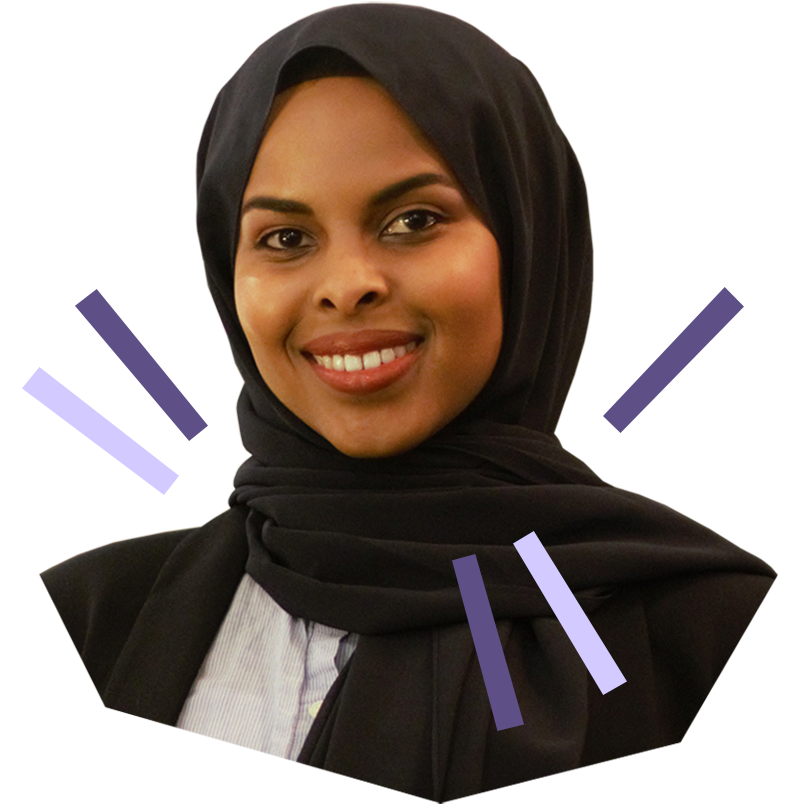
In the summer of 2011, after Ugbaad Kosar finished her freshman year in college, her extended family in Somalia was dealing with the worst drought and famine in memory. As traditional pastoralists they relied on the rains, and the drought shattered their livelihood. She spent her summer fundraising to help her family and others, and by the time school resumed in the fall she had a new perspective. When people talked about the “impending” climate crisis, she’d think, “‘It’s not impending. It’s here.’ It made me laser-focused,” she says.
A few years after earning her master’s degree, she joined Carbon180, a carbon-removal policy development and advocacy organization. She was particularly interested in questions of equity, such as: Since the U.S. and Europe are responsible for more than their share of emissions, shouldn’t they assume more responsibility for getting rid of excess carbon? On a local level, if specific carbon-removal projects create jobs, or increase resilience to extreme weather, or lead to cleaner air and water, can they be built in disadvantaged communities that pay the biggest price from climate change?
“We want to think critically about carbon removal and how it can create benefits for people.”
These are still emerging questions, and Kosar hopes to influence how they play out by working with the federal government to shape policies and regulations. That work includes advising appropriation requests, offering technical support on bills, and reviewing proposed legislation to ensure equity. The organization is also involved in redistributing funds to environmental justice groups so that their members can also learn about the potential. “We want to think critically about carbon removal,” she says, “and about how it can create benefits for people.”
Rev. Kyle Meyaard-Schaap
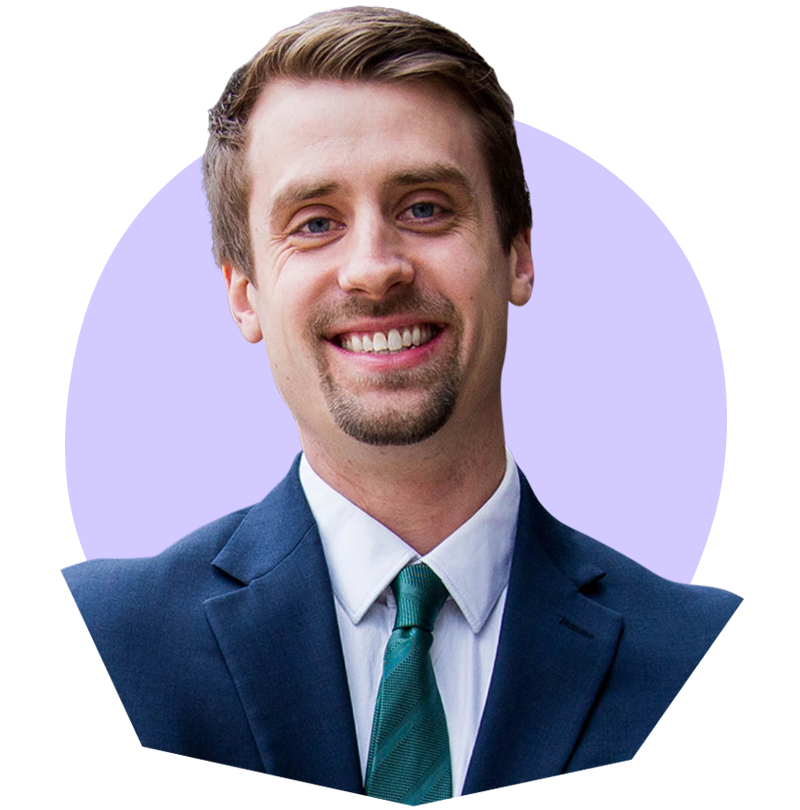
Evangelicals really do care about climate, says Rev. Kyle Meyaard-Schaap. But few evangelicals hear about it in language that resonates and includes them in a plan for action.
When he was growing up in conservative western Michigan, for instance, it just wasn’t an issue. “Not skepticism or derision,” he says. “We just didn’t talk about it.” His awakening began when his brother came home from a college study abroad trip, announcing he had gone vegetarian for climate reasons. In late-night brotherly talks, and through study and thought, Meyaard-Schaap came to see the connection between his strong faith and the imperative to act on climate. “We cannot love our neighbor if we’re not fighting for clean air, clean water, and a stable climate to support them,” he says. Addressing the climate crisis is part of what it means to follow Jesus, he adds: “It’s part of basic discipleship.”
“We cannot love our neighbor if we’re not fighting for clean air, clean water, and a stable climate to support them.”
After college and seminary, he joined Young Evangelicals for Climate Action in 2016, activating young Christians on the issue through lectures and discussion sessions at Christian colleges and a leadership development program for Christian students. The group also pressures senior evangelical leaders and elected officials to focus on climate issues.
His work at the Evangelical Environmental Network is similar — education efforts, online events, Bible study — but for a broader audience. “We’re helping evangelicals understand that they do belong in this story of action, that there are solutions consistent with their values and identity,” he says. Along those lines, he’s organizing prominent Christian musicians for a climate-focused worship album that can bring people together in a familiar way. Songs are like “connective tissue” for social movements, he points out. “Music is powerful.”
Marcela Mulholland
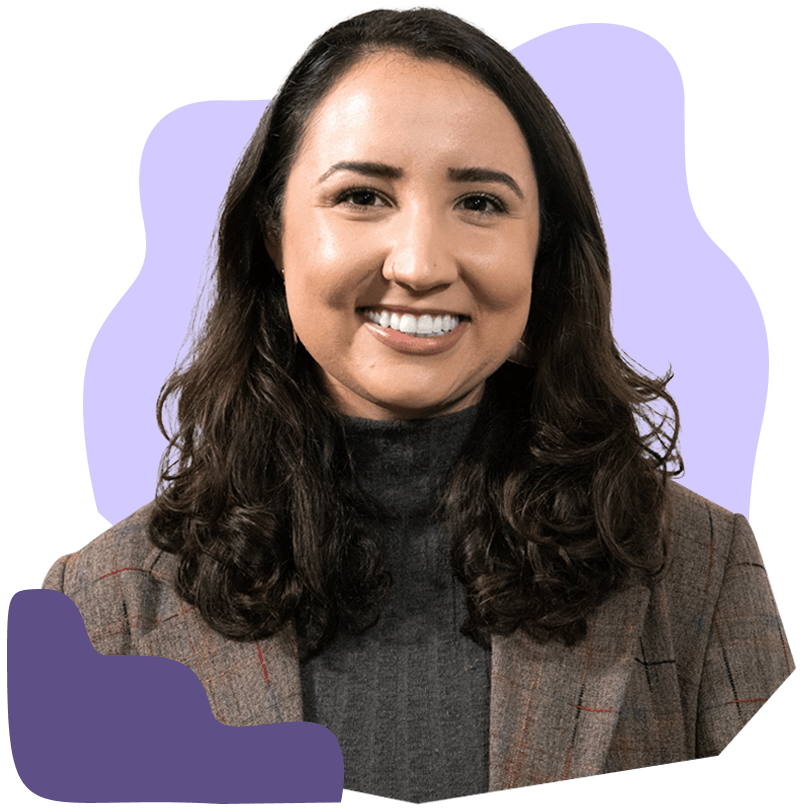
For some, climate change and climate justice as a life calling come slowly into focus. For Marcela Mulholland, it happened slowly — then all at once. She was a student at the University of Florida, becoming increasingly environmentally conscious. Then Trump was elected. “It was pivotal,” she says. “It clarified what I wanted to dedicate the rest of my life to.”
In the days following the election, she changed her majors to sustainability and political science. She made a sign — “Climate Change Is Real” — and wore it around her neck to English class. Coincidence struck. Her teacher was in touch with a new youth activist group, the Sunrise Movement, and they were looking for members.
Fast forward to 2018. With Sunrise, Mulholland spent that fall door-knocking for climate candidates in Florida. After election day, the activists met up in D.C., where she learned that a protest at Nancy Pelosi’s office was planned for the next day. She signed up for a sit-in that became famous.
After that, Mulholland worked on campus divestment campaigns while finishing her degree, then in 2020 joined the polling firm and think tank Data for Progress. Their emphasis is on generating and analyzing polling data that can help progressive candidates decide how best to frame climate concerns, and they also test the popularity of climate policies.
“I translate the polls for people who aren’t data nerds.”
Mulholland translates the wonky data analytics to the campaigns and organizers who need it to fine-tune their appeals. “I build the relationships for the polling to have the audience it needs, and translate the polls for people who aren’t data nerds,” she says. Right now, that means looking toward another set of midterms, and she’s not daunted: “There are things Dems can be doing to advance their chances at winning, like passing legislation that’s popular and improves people’s lives,” she says. “I’m excited about that opportunity.”
Eliza Nemser

At first, Eliza Nemser’s career as a geologist involved assessing the threat earthquakes pose to dams, power plants, and other critical infrastructure. But as the 2010s wore on, the job increasingly entailed helping oil and gas companies reduce the seismic hazards of operations such as fracking. She had two children, both of whom had respiratory problems. And then came the horrific 2017 California wildfire season, which blanketed the state in a thick, persistent layer of smoke. She decided it was time for a career change. “We’re not going to be able to science our way out of this problem,” she realized. Maybe what the world really needed was better politicians. She could see the math: Good climate policy was essentially a matter of more votes for better candidates who could enact real solutions. Nemser began attending fundraisers and other events, giving candidates advice on climate, and making sure they could run on it, win on it, and legislate on it.
“We are all about removing the friction to effective climate advocacy.”
But few have the chance to meet politicians face-to-face, and Nemser wanted to get more people involved: “I was hell-bent on creating a way for people to take effective action.” She and others launched the org Climate Changemakers in 2020. Volunteers are invited to advocate on behalf of climate candidates, or write letters to the editor, reach out to policymakers, or connect with utility companies or local agencies. Rather than ask for money, Climate Changemakers asks for time. More than 1,800 folks have signed up, and more than half of them are new to political action. “There’s nothing more fulfilling than doing productive work,” Nemser says.
She aims to reach the three out of 10 of Americans who say they would take political action on climate if the right person asked. “We are all about removing the friction to effective climate advocacy,” she says.
Khanh Pham
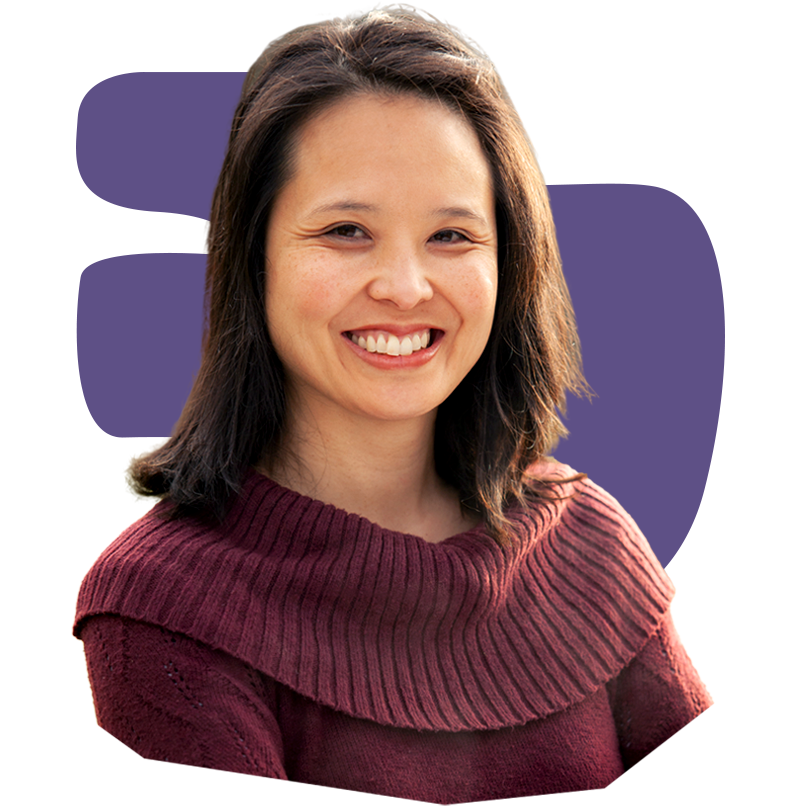
From the beginning, Khanh Pham was always a community organizer, collaborating with people directly affected by issues in order to enact change. That perspective shaped how she saw political possibilities — and now, how she does her own politicking as an Oregon state representative. In her 20s, she worked on a variety of issues, from transportation justice to immigrant rights. Then, on a retreat that brought racial justice organizers together to strategize on environment, she saw how closely the causes she fought for, like workers’ rights and immigrants’ rights, were interlinked with climate and environmental issues. It planted a seed, she says.
While working toward a degree in urban studies, Pham joined the Asian Pacific American Network of Oregon, building out its environmental justice program. She also championed a citywide coalition, led by communities of color, to back the Portland Clean Energy Fund. That landmark project, approved by voters in 2018, adds a 1 percent surcharge to the business license fee for companies with over $1 billion in revenue. The fund generates roughly $60 to $80 million annually for clean energy projects and job training. “We found a way to raise money from the biggest corporations to fund low-income communities of color that are being left out of the green economy,” she says. “It was so empowering and transformative.”
“We found a way to raise money from the biggest corporations to fund low-income communities of color that are being left out of the green economy.”
Following that success, she ran for a vacated state legislature seat in 2020 and won. Many of the same groups who backed PCEF joined forces to draft legislation that set a 100 percent clean energy standard, establish a discount electricity rate for low-income Oregonians, and provide $10 million in weatherization funds. All three bills passed. Among other projects, Pham is now building a PAC to recruit and elect more climate justice candidates. “Electing new leaders is one of the most powerful actions we can take to build a more just and equitable world.”
Missy Stults

There is no issue more global than climate change, but Missy Stults is an avowed localist. She loves knowing the people in her neighborhood and the minutiae of how local decisions get made. In her mind, that’s no conflict. Making policy in your own city means you literally live and breathe the connections between your community and the massive problem of a warming world — and you have the chance to do something about it. “It’s so rewarding, but it hurts so bad when it doesn’t happen, because it’s your community,” she says. “It’s horrible, it’s amazing, it’s magical, it’s terrifying!”
“Climate impacts don’t respect regional boundaries.”
She took the job of chief of sustainability in Ann Arbor in 2018, and has helped lead the city to one of the nation’s most aggressive municipal climate policies. The big goal is achieving carbon neutrality by 2030 — and there’s an actual roadmap for getting there: A2ZERO, which came together in just 82 days and was adopted in June 2020. Among other accomplishments, the city has supported the installation of rooftop solar on 350 houses, designed the first net-zero fire station east of the Mississippi River, and launched a program to help low-income seniors with both energy efficiency and safety upgrades like grab bars. The next phase includes an effort to decarbonize the diverse Bryant neighborhood, while improving health and safety.
In recent years, cities have stood alone as climate leaders, but Stults predicts that soon will change. “This work is going to start happening much more regionally,” she says. “Climate impacts don’t respect regional boundaries.”
Rob Thomas
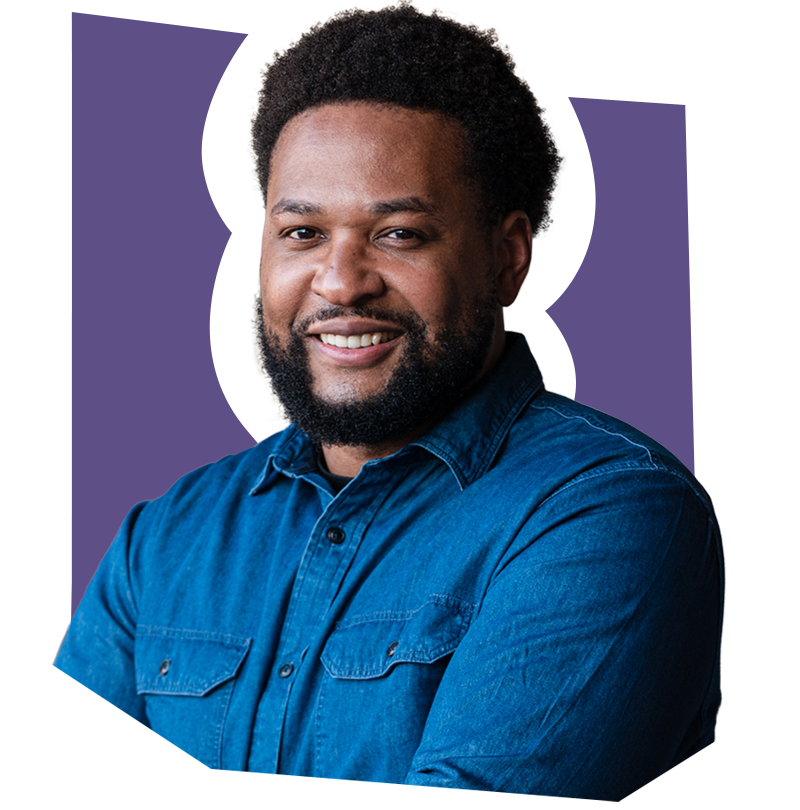
For more than 10 years, Rob Thomas worked behind the scenes designing and managing infrastructure projects and crafting policies for the city of Newark, such as the city’s first sustainability action plan. He had a knack for details and a background in engineering, but early on he and his team often ran into bureaucratic obstacles — and those who prefer to claim something can’t be done, rather than try to do it differently. “People would say, ‘We can’t do this because of the utility.’ The utility says, ‘We can’t do it because of the state.’ The state says the feds,” he explains. “You get tired of it.” He was also heavily involved in a coalition of cities with ambitious renewable energy goals working to change the regulations governing the wholesale electricity market in the mid-Atlantic region and Midwest.
Professionals who understand how to build projects with an eye toward justice are positioned to make real change — if they only had a little advice.
Thomas resigned as the city’s chief of energy and environment last October to join the global engineering firm AECOM. He wanted to understand the business case for sustainable projects. But he hasn’t left government behind; he’s part of the team behind Climate Candidates, a project to identify leaders in sustainability who have political aspirations or want to assist those who do. The effort focuses on deep down-ballot races with potential for powerful local impact, such as those for council members, zoning board officials, or transit commissioners. The guiding idea is that professionals who already understand how to build and implement projects with an eye toward justice are perfectly positioned to make real change — if they only had a little advice and guidance. “Nobody really knows how to get into politics or be part of a campaign,” he says. “It’s opaque.” Thomas and the team tap into their own networks to find expert advisors, and offer accelerator programs that have so far trained between 30 and 35 potential candidates.
Andrea Vidaurre

When Andrea Vidaurre was a kid, her father worked in one of the big warehouses that dotted the Inland Empire — the hard-working industrial part of California. Back then, many of the jobs were union, and the industry was a solid option for immigrants like her parents.
But the massive growth of distribution and logistics industries transformed life in the region. Vast warehouses sprouted up in working-class neighborhoods, bringing a constant stream of 18-wheelers barreling down narrow streets. Residents lived with some of the worst ozone pollution in the nation. “It’s consumption, consumerism, and the convenience economy — except it’s not convenient to those who live next to it,” says Vidaurre.
And while the e-commerce boom brought more warehouse jobs, it brought temporary jobs, many of which were non-union. So when the city of Fontana planned to rezone an entire neighborhood to encourage still more warehouses in 2018, Vidaurre, who had just begun volunteering with a local environmental justice group, supported community members in postponing the plan. In the process, she began learning about the rules that govern such projects. Although they favored development, they could also be used to hold government and industry accountable.
“It’s consumption, consumerism, and the convenience economy — except it’s not convenient to those who live next to it.”
About a year ago, she and five others launched The People’s Collective for Environmental Justice to bring workers and residents together. In a project with students, they mapped the region’s warehouses, finding that 80 percent are in communities of color — textbook environmental racism.
The collective has successfully pushed the regional air district to require every warehouse to reduce emissions by adding rooftop solar, buying zero-emission vehicles, or building charging infrastructure for electric vehicles. Working with the nonprofit Warehouse Worker Resource Center, Teamsters, and others, the group has a grant to create worker-training programs in San Bernardino for electric trucks and green jobs in logistics: “As we transition into a sustainable industry, workers and community members have to be a part of it,” Vidaurre says.
Jahi Wise
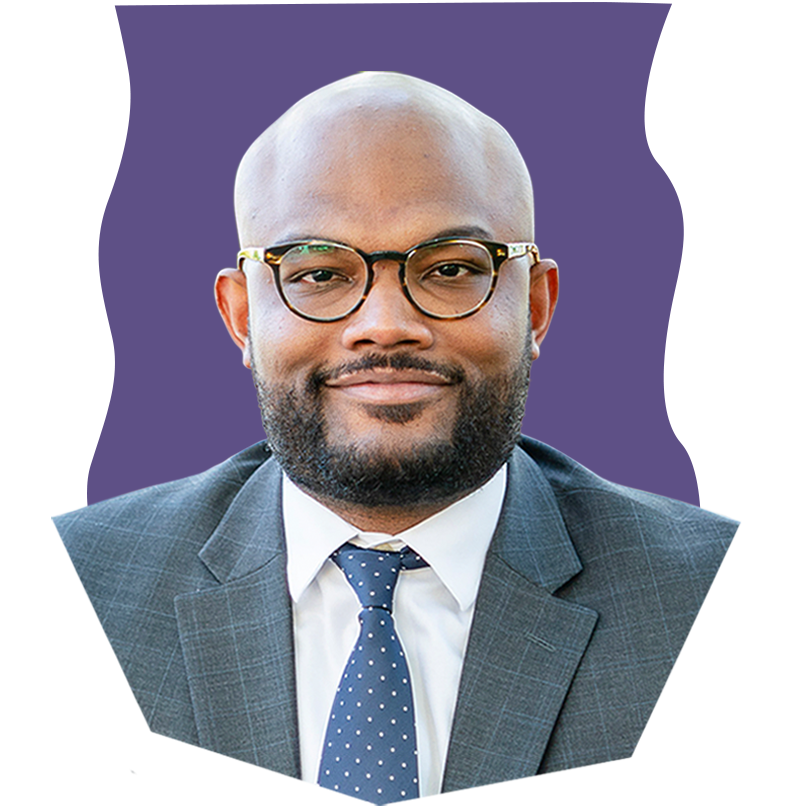
In the wake of Hurricane Katrina, Jahi Wise and his friends drove from Atlanta to New Orleans to help. What he saw there changed him: the aftermath of supercharged weather disasters striking neighborhoods already hurt by poverty. He understood climate and resilience from the perspective of justice and community strength — as a problem and opportunity to be dealt with, and tools to use, in ways that improve equity. “I came to climate through the lens of people first and foremost,” Wise says.
He worked as a community organizer in Washington, D.C., and helped press the city to create more green jobs for low-skilled workers. In business and law school at Yale, he got hooked on the power of finance to solve climate and justice problems simultaneously by, say, helping people retrofit their homes to lower emissions and their bills.
“I came to climate through the lens of people, first and foremost.”
Now, Wise comes up with concrete solutions to address White House policy priorities — fixing leaking methane, getting people to replace gas furnaces with heat pumps, directing new investments into communities that are dependent on fossil fuel jobs. The throughline between all these projects is investing in families and communities. “The utilization of capital is really important to solving the challenges in front of us and an opportunity to level the playing field,” he says. “This stuff costs money.”
The role requires coordinating across federal agencies, supporting legislative pushes, strategizing to figure out how agencies can work together, and connecting with people outside of government. “We can’t solve the climate crisis unless we invest in the families and communities that are most impacted,” he says.
Credits
- FIX CO-DIRECTORS
- Lisa Jurras-Buchanan, Jess Stahl
- MANAGING EDITOR
- Jaime Buerger
- PROJECT EDITOR
- Kat McGowan
- EDITORS
- Chuck Squatriglia, Claire Elise Thompson
- RESEARCH
- Barbara Kean
- ART DIRECTOR
- Mia Torres
- DIRECTOR, INNOVATION & GROWTH
- Christian Skotte
- DESIGN & DEVELOPMENT
- Michael Weslander
- CREATIVE ADVISER
- Mignon Khargie
- PROJECT INTERN
- Izania Gonzalez
- COMMUNICATIONS COORDINATOR
- Josh Kimelman
- DEPUTY DIRECTOR, AUDIENCE
- Megan Merrigan
- SOCIAL MEDIA & MARKETING
- Donna Kim